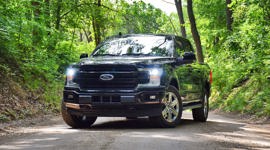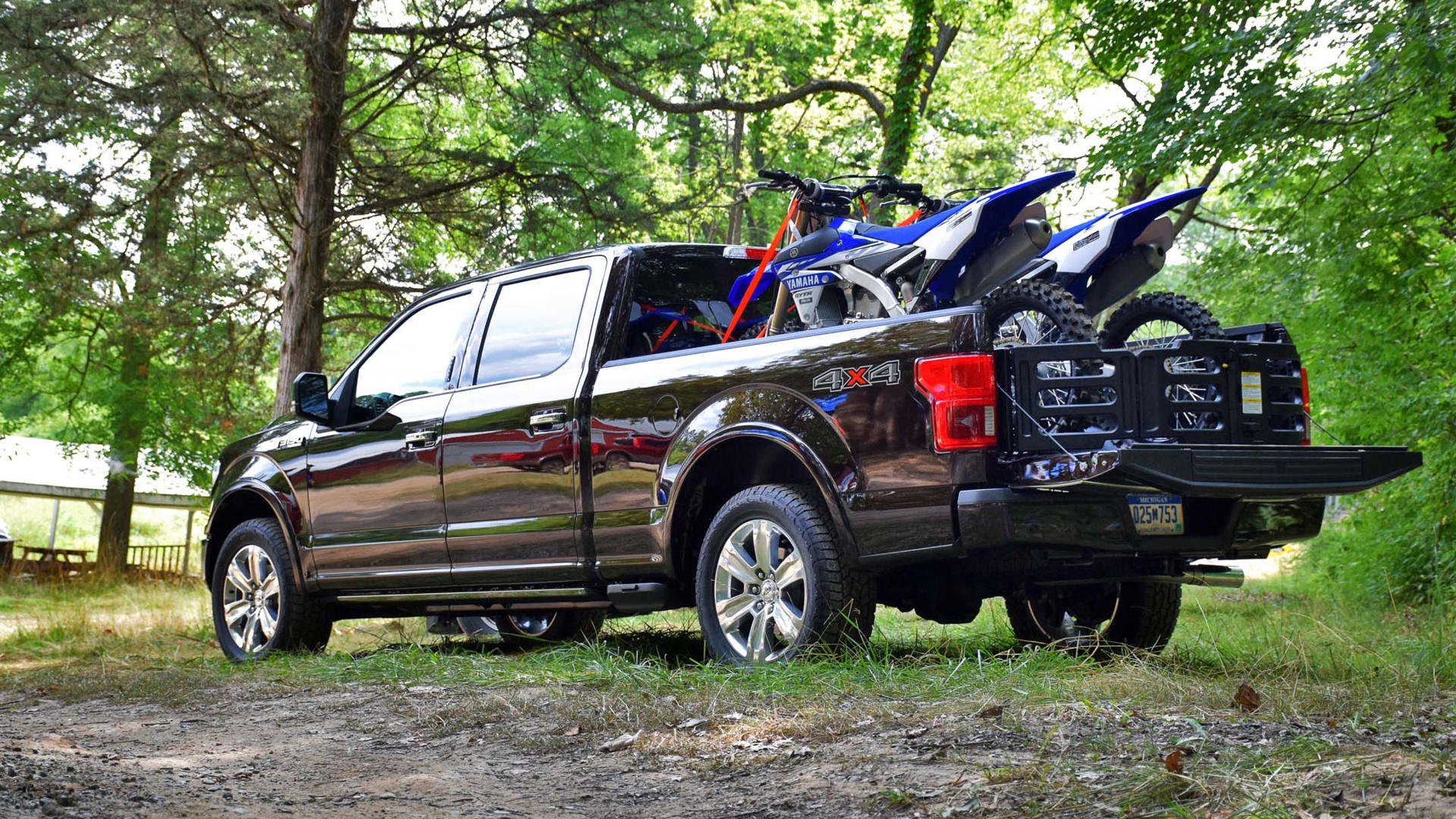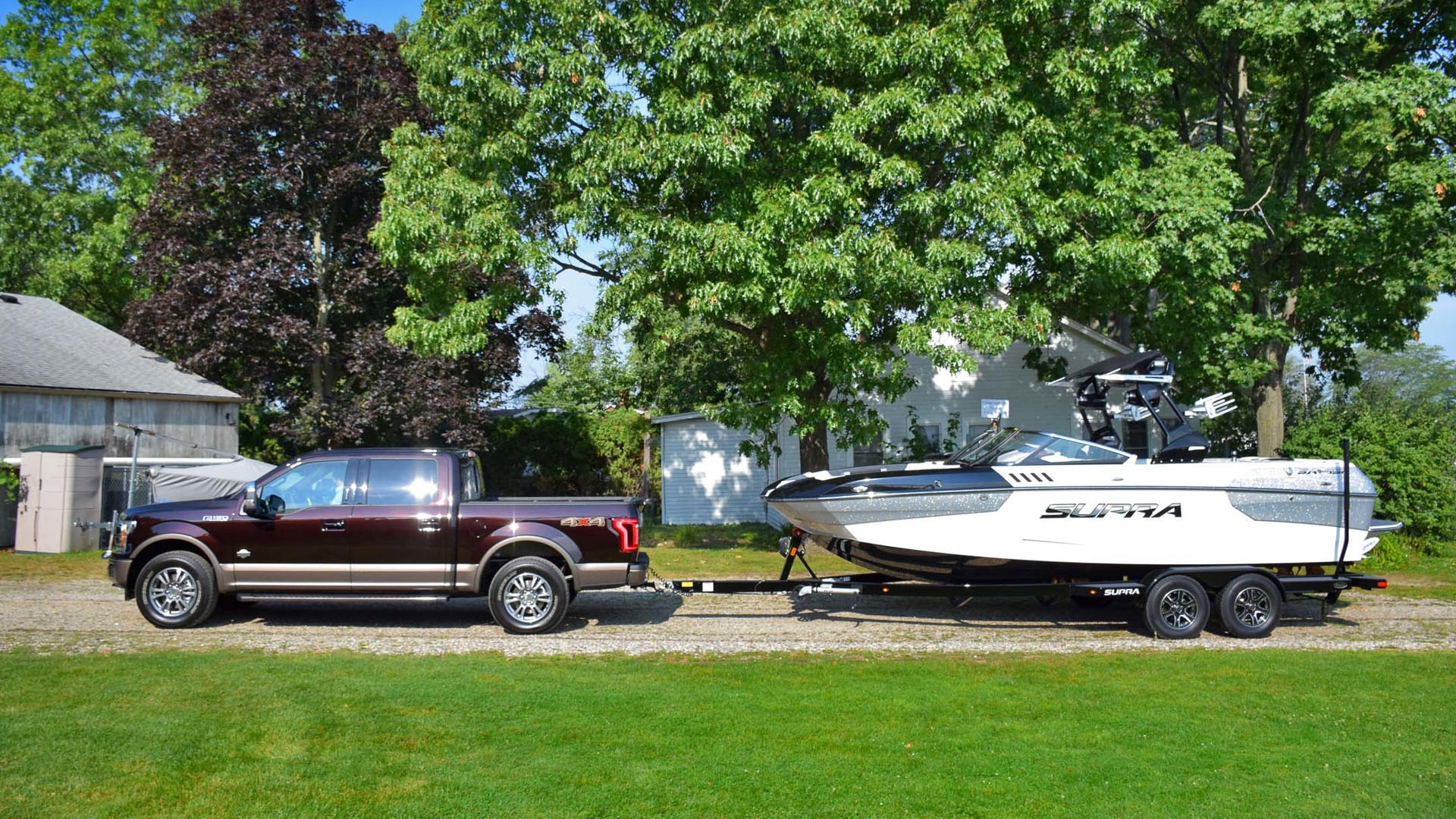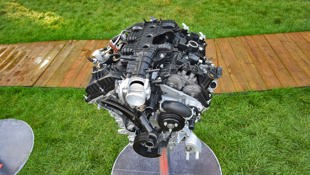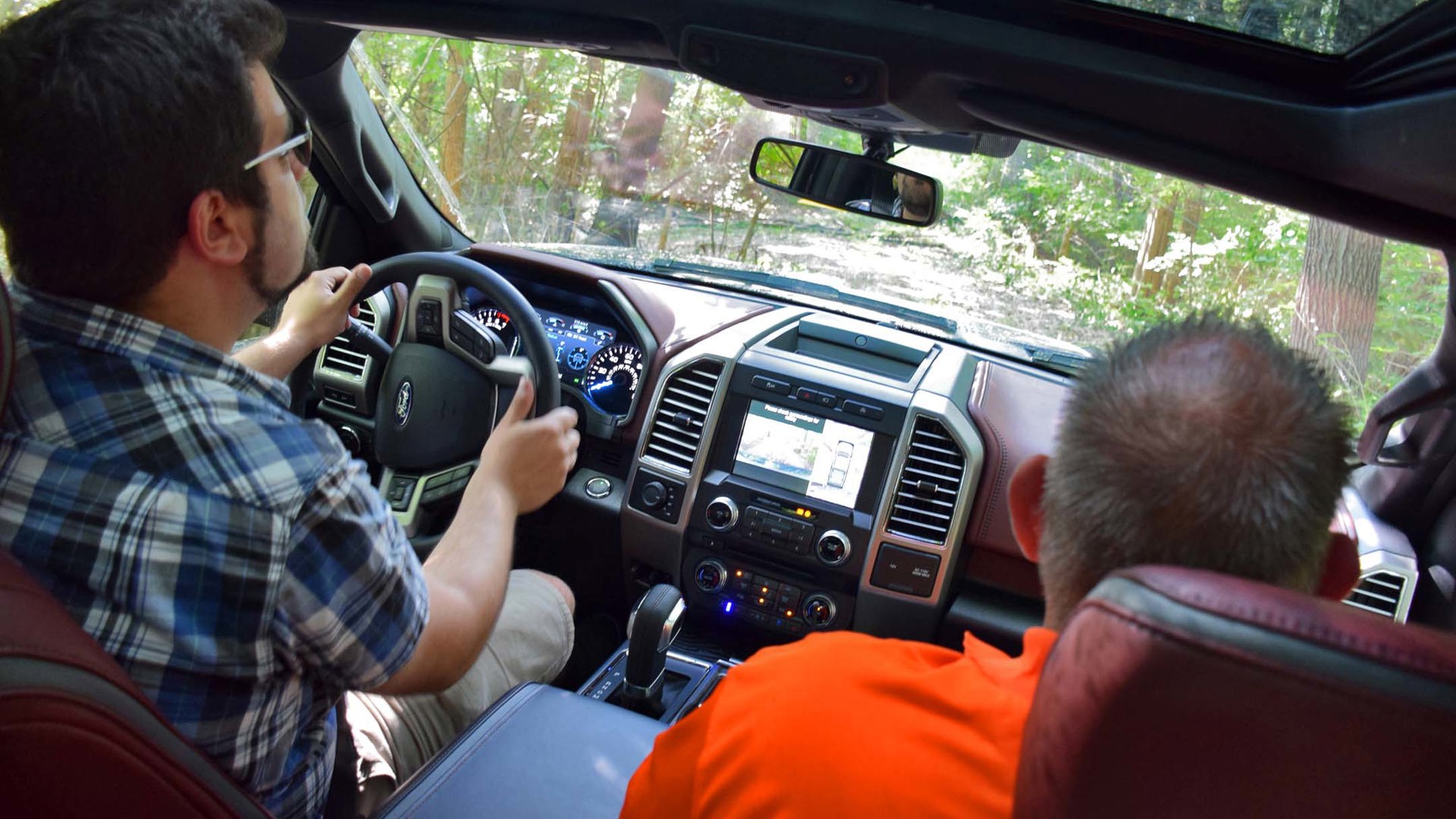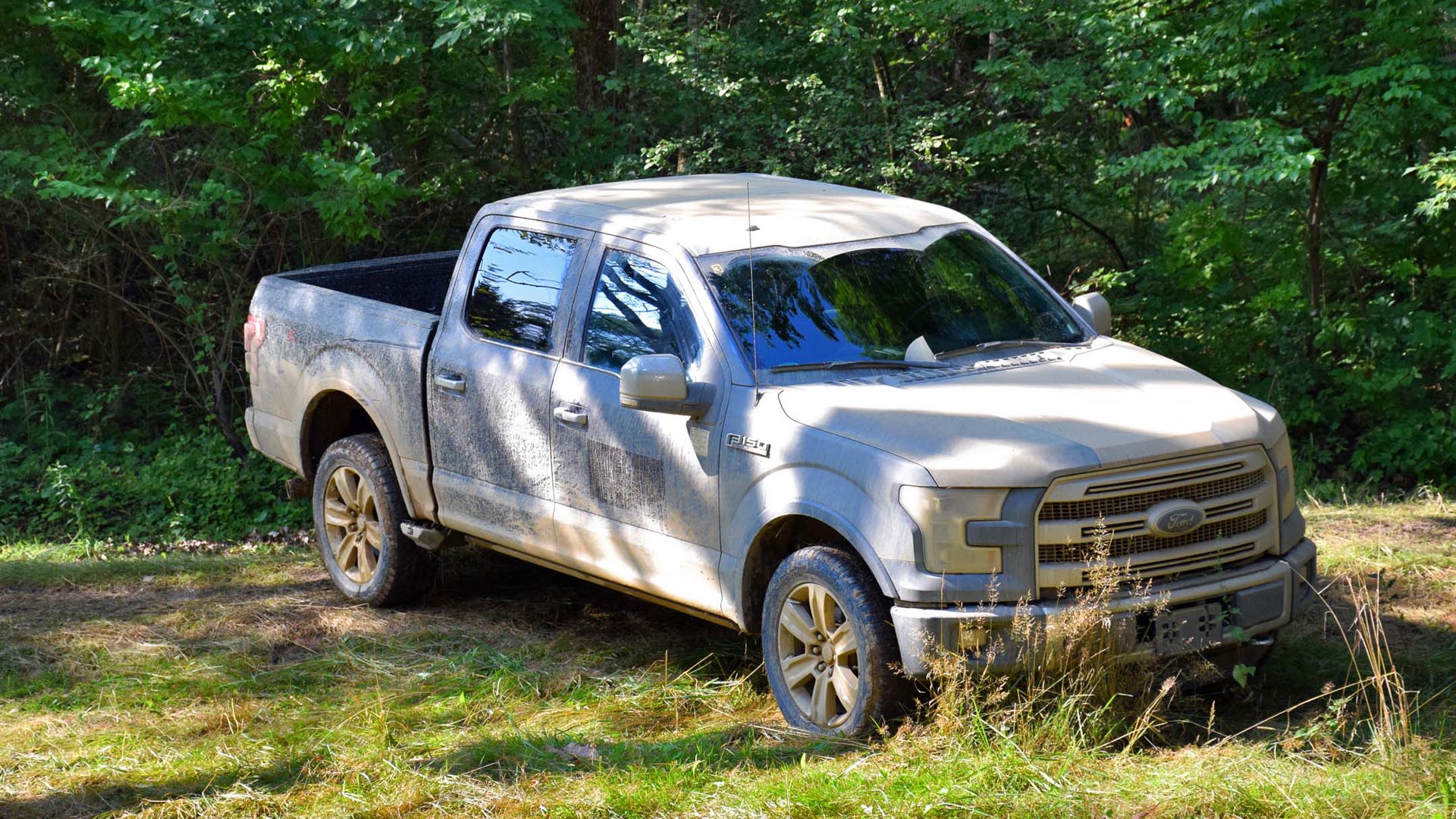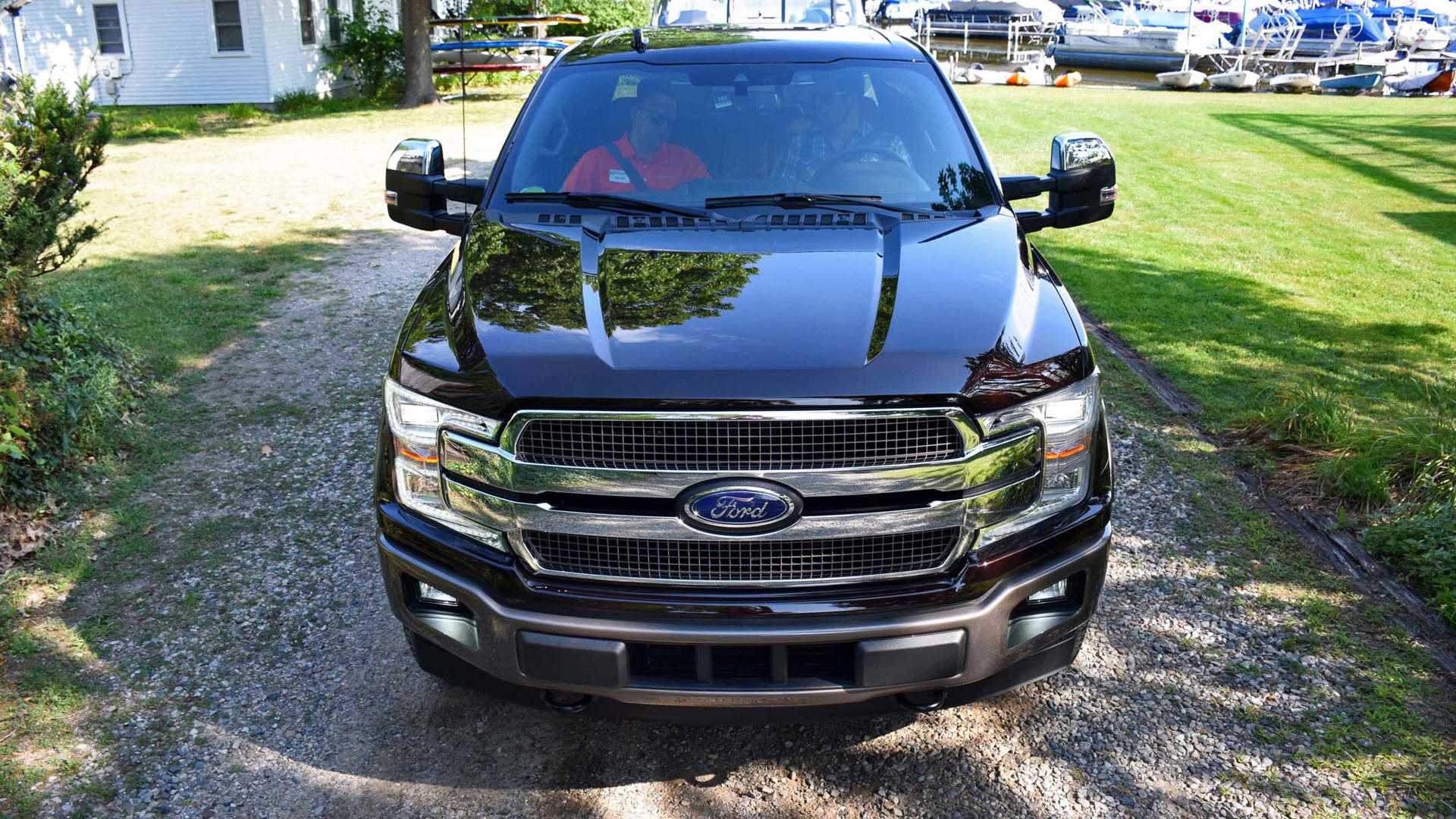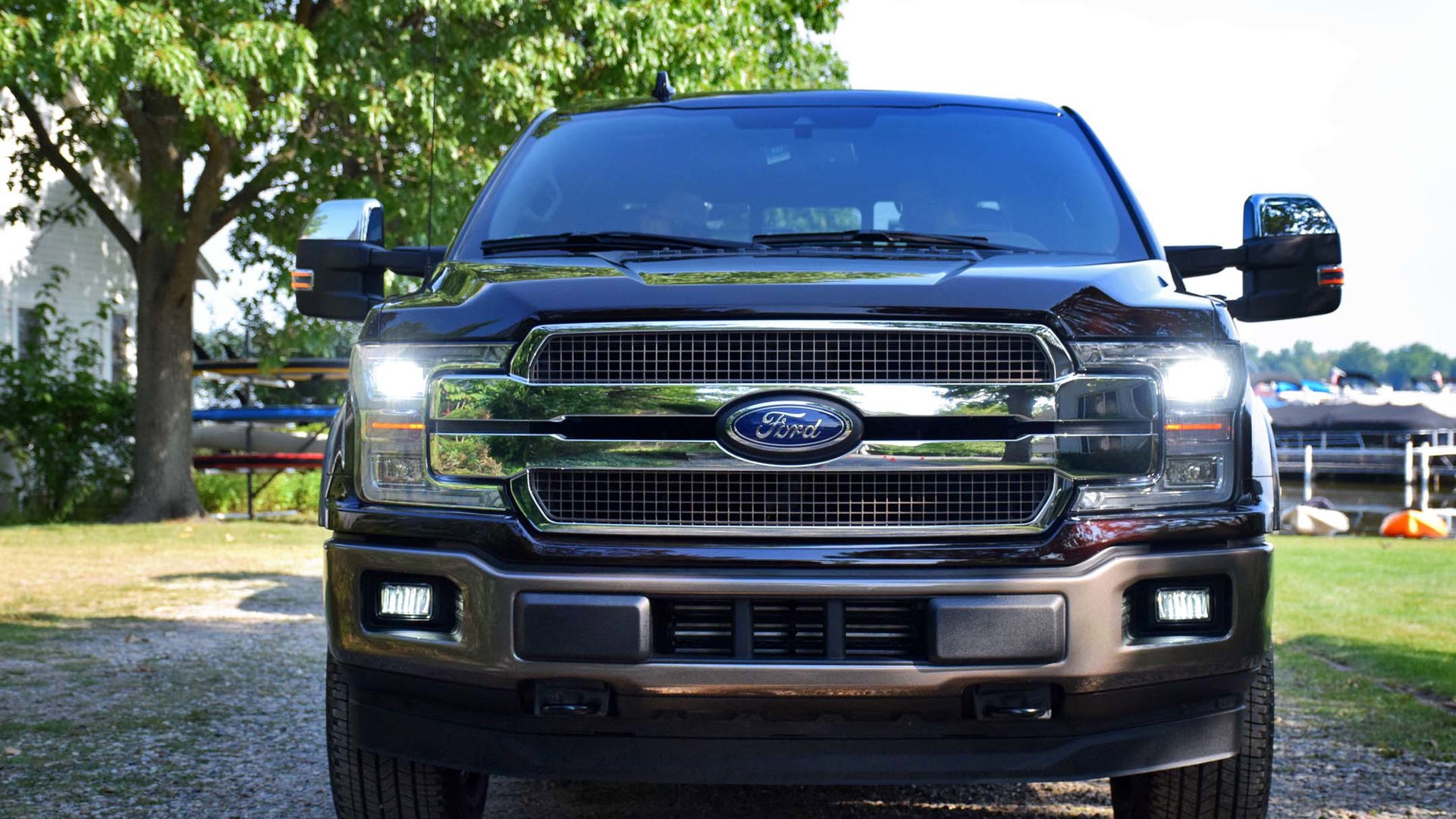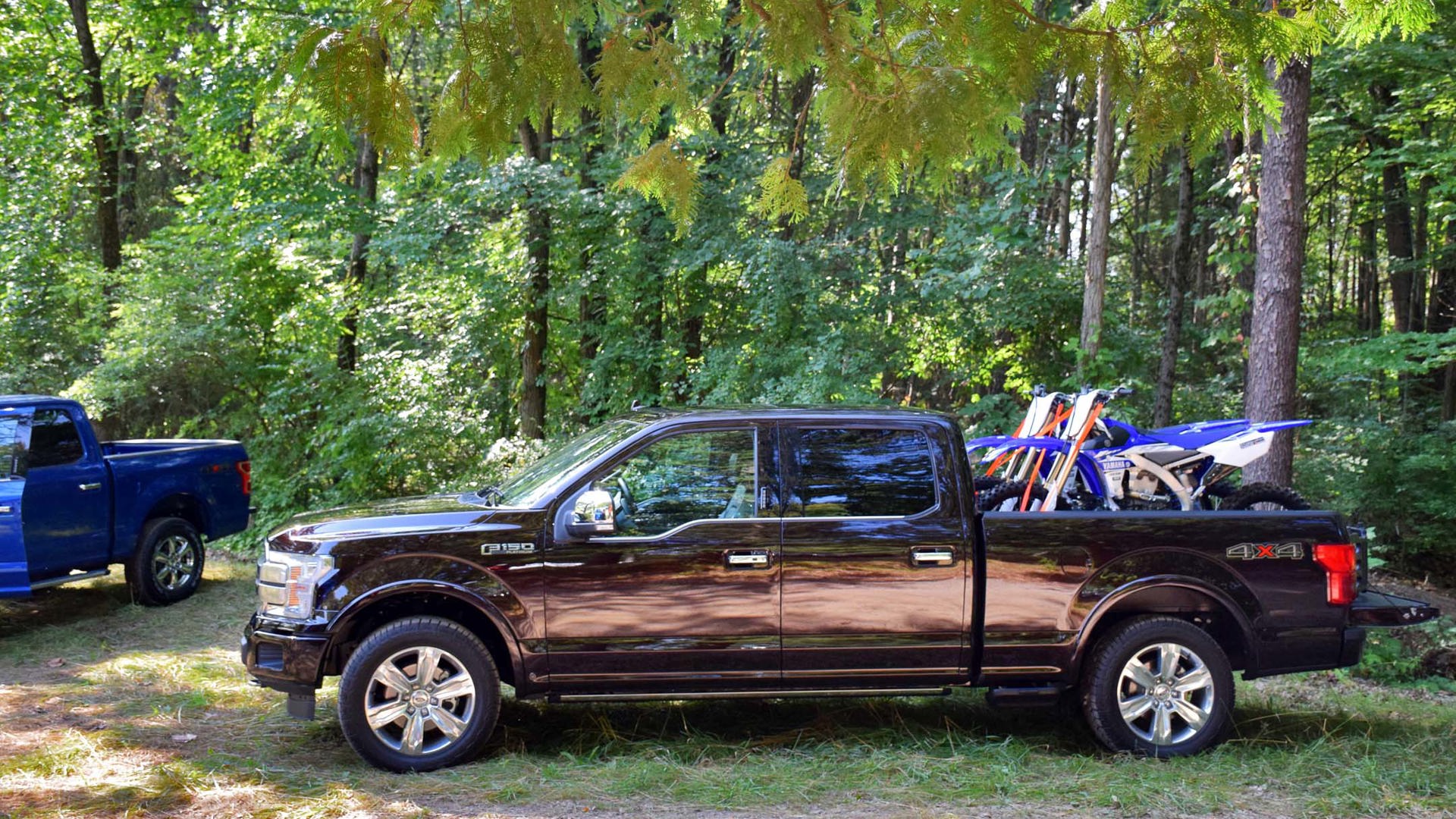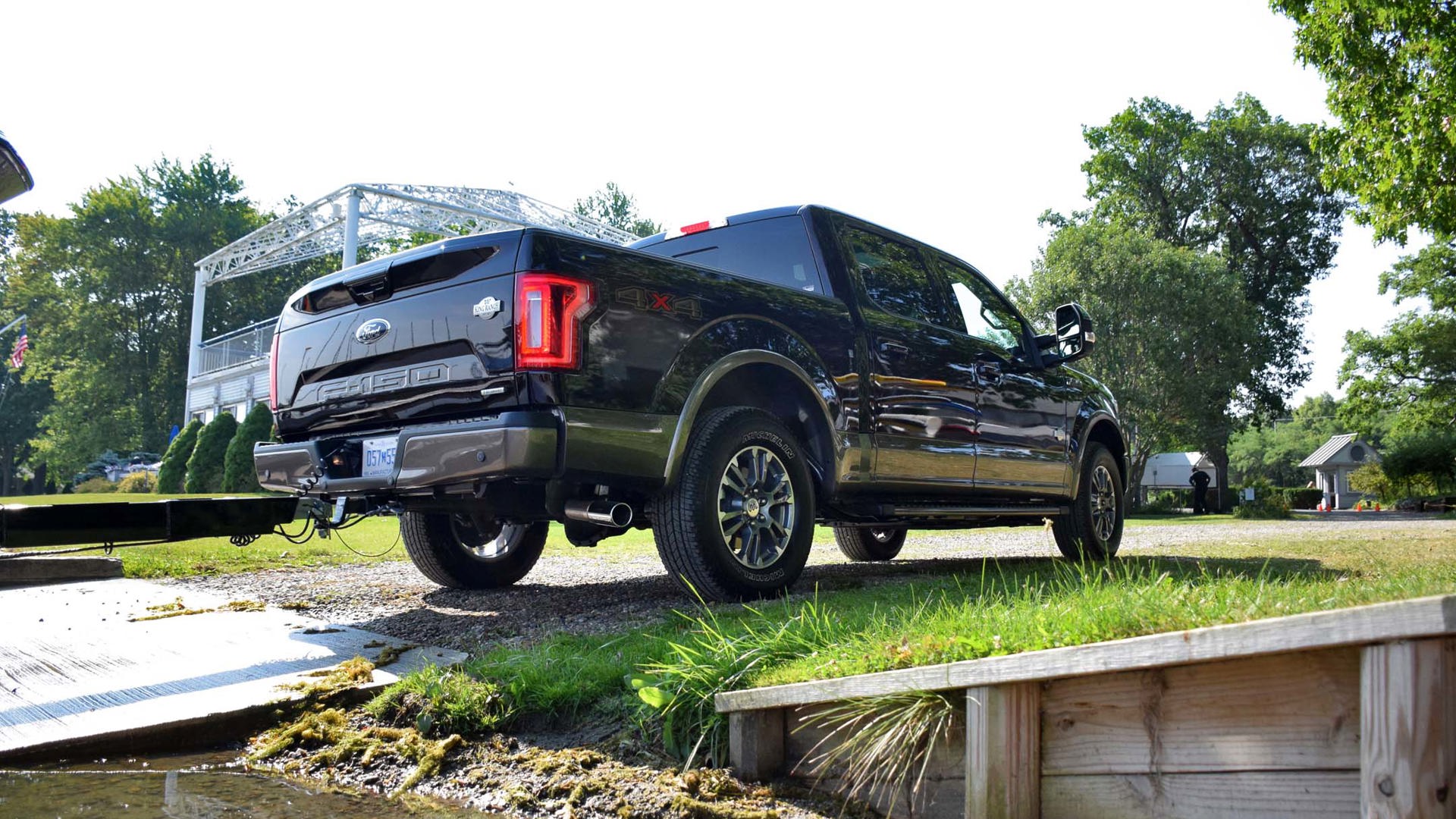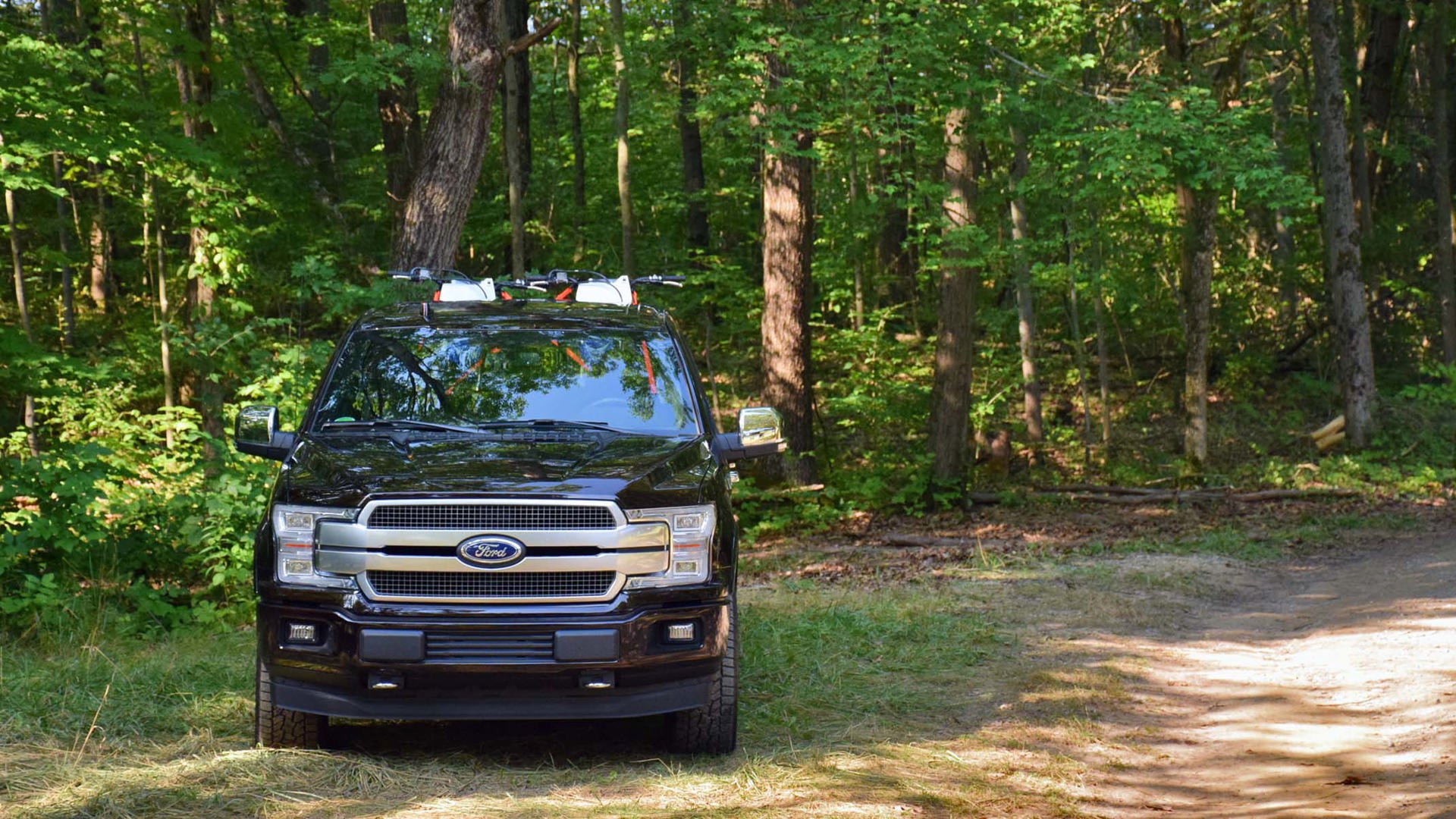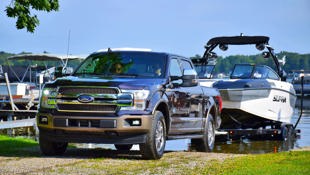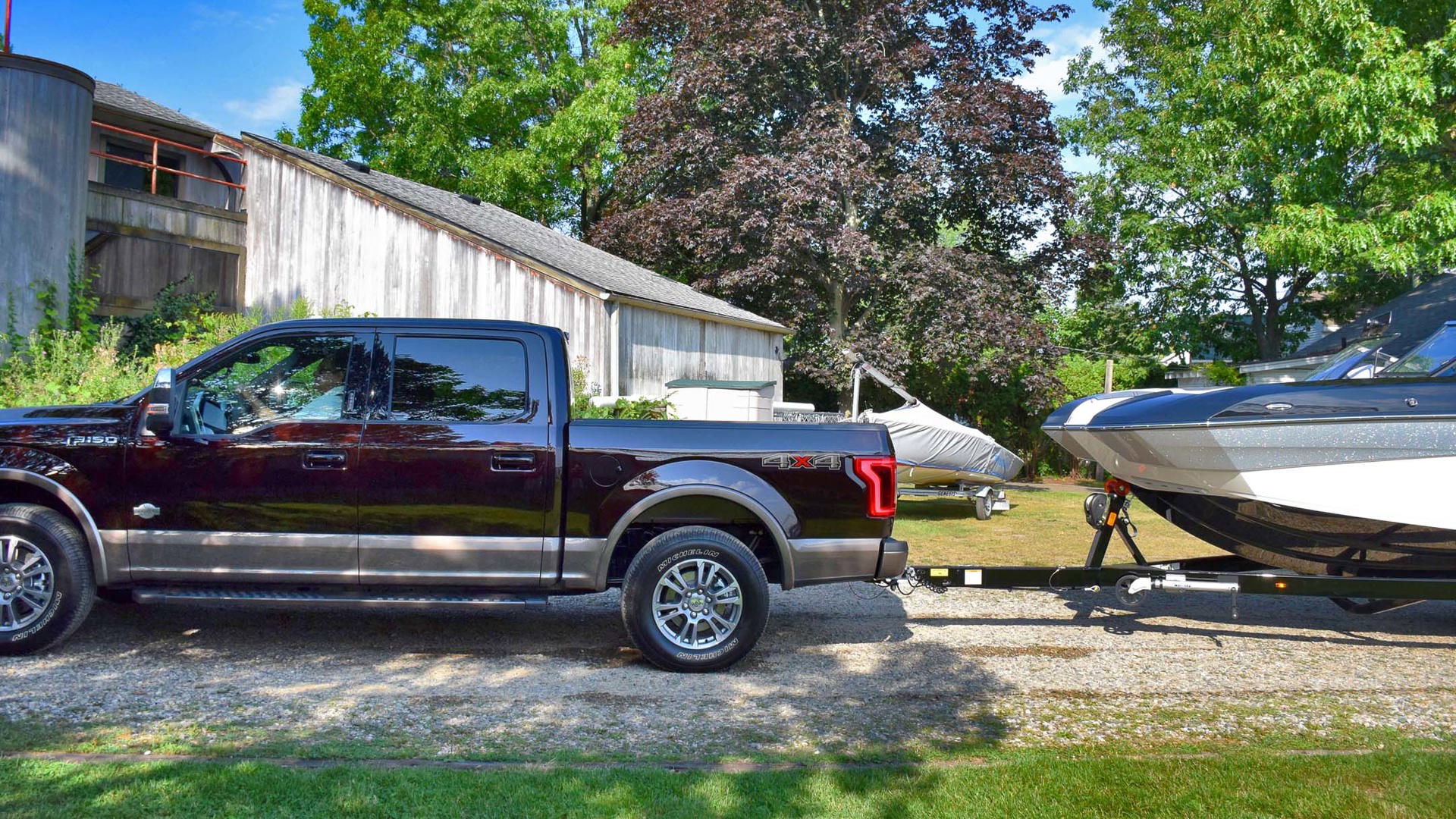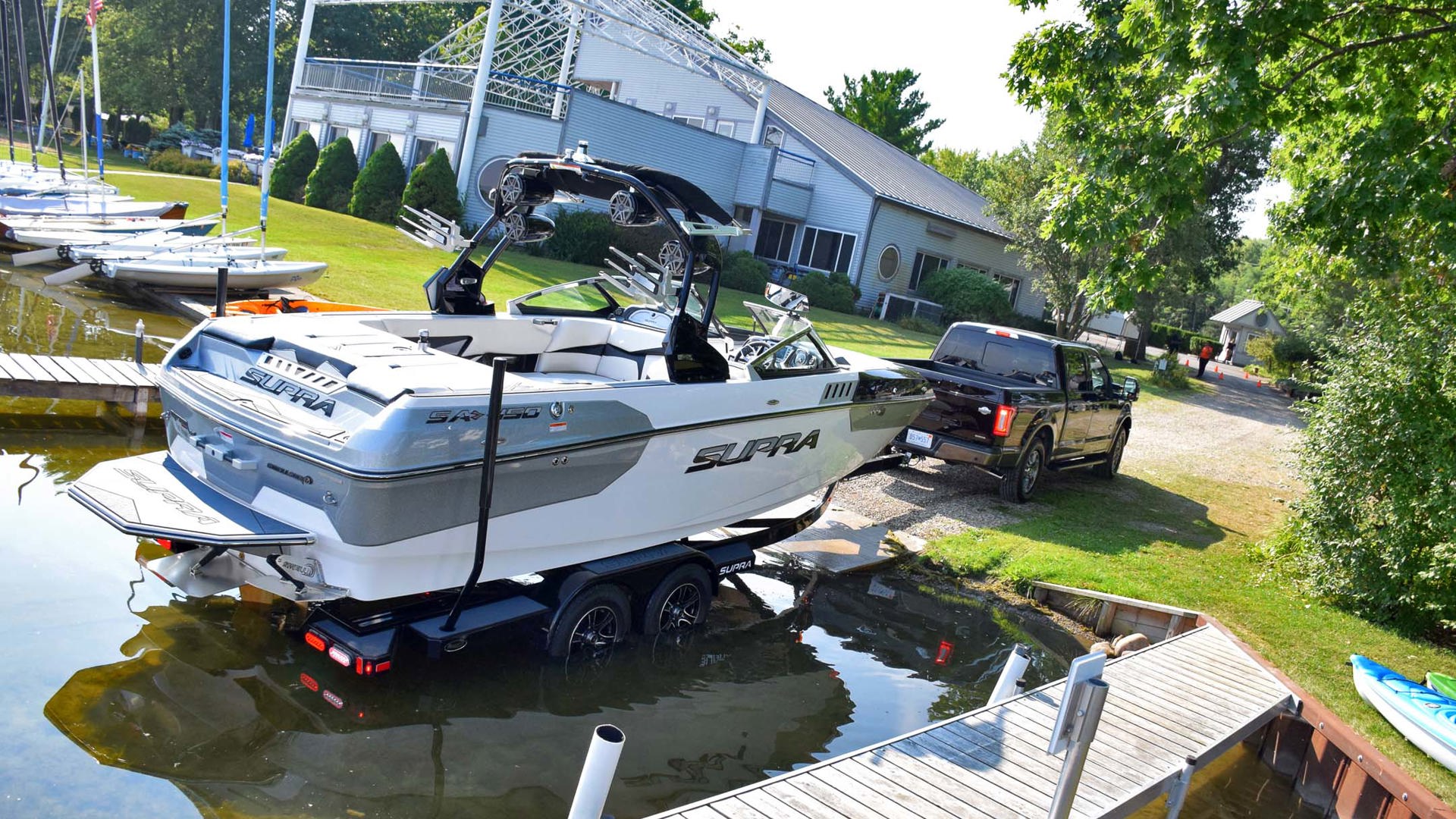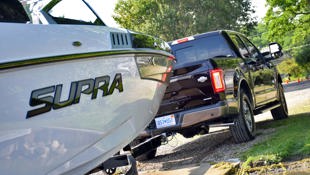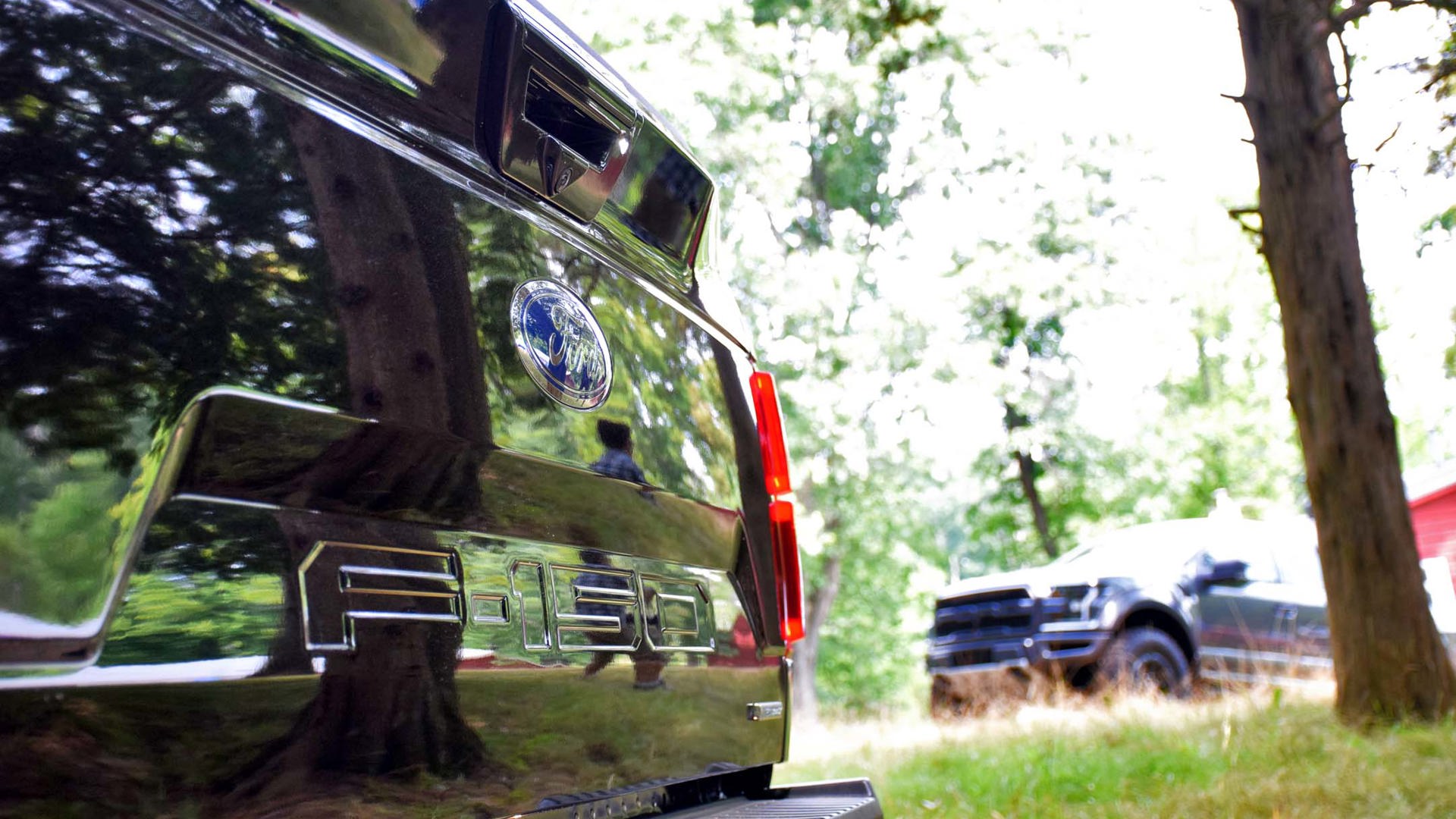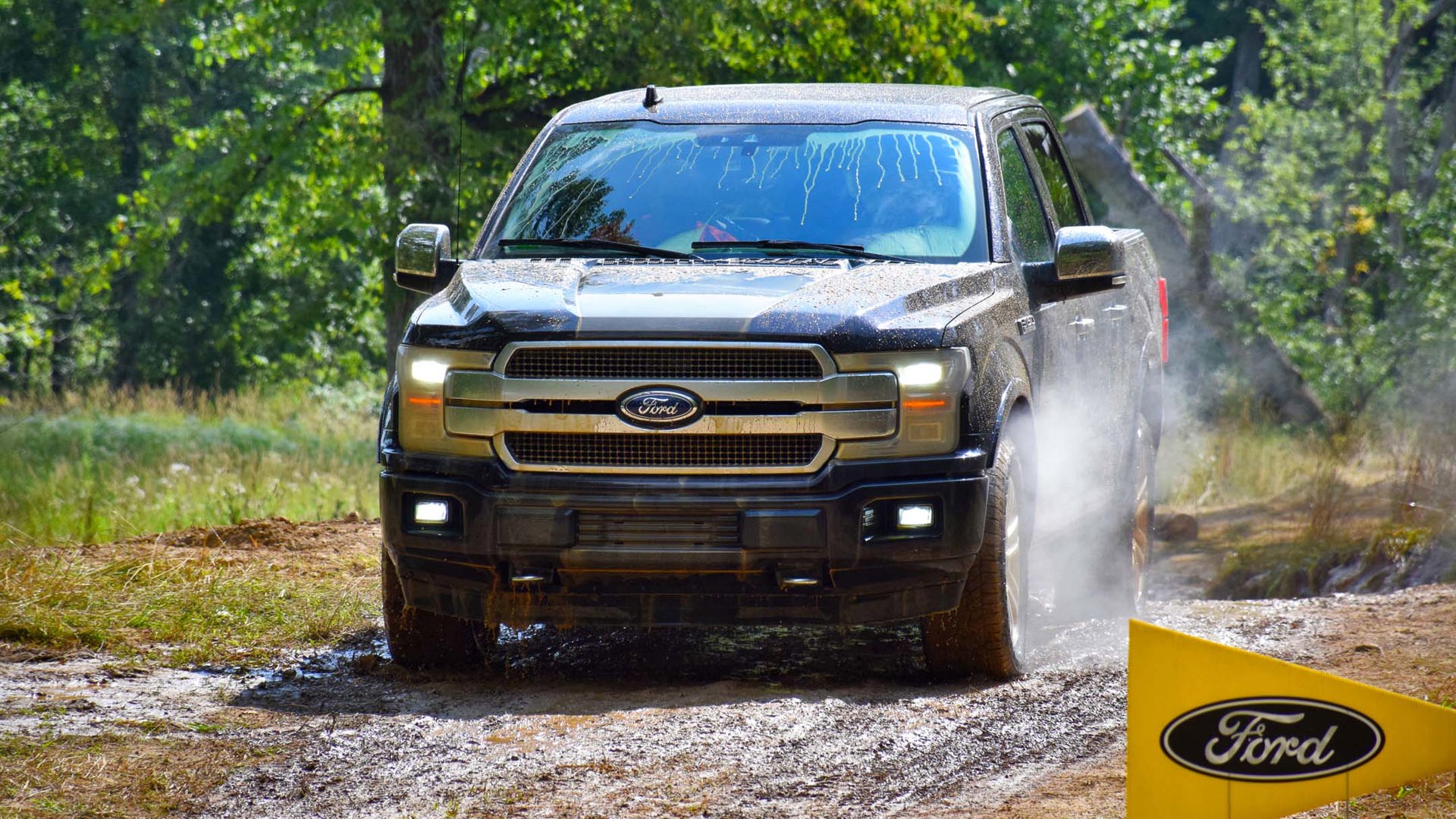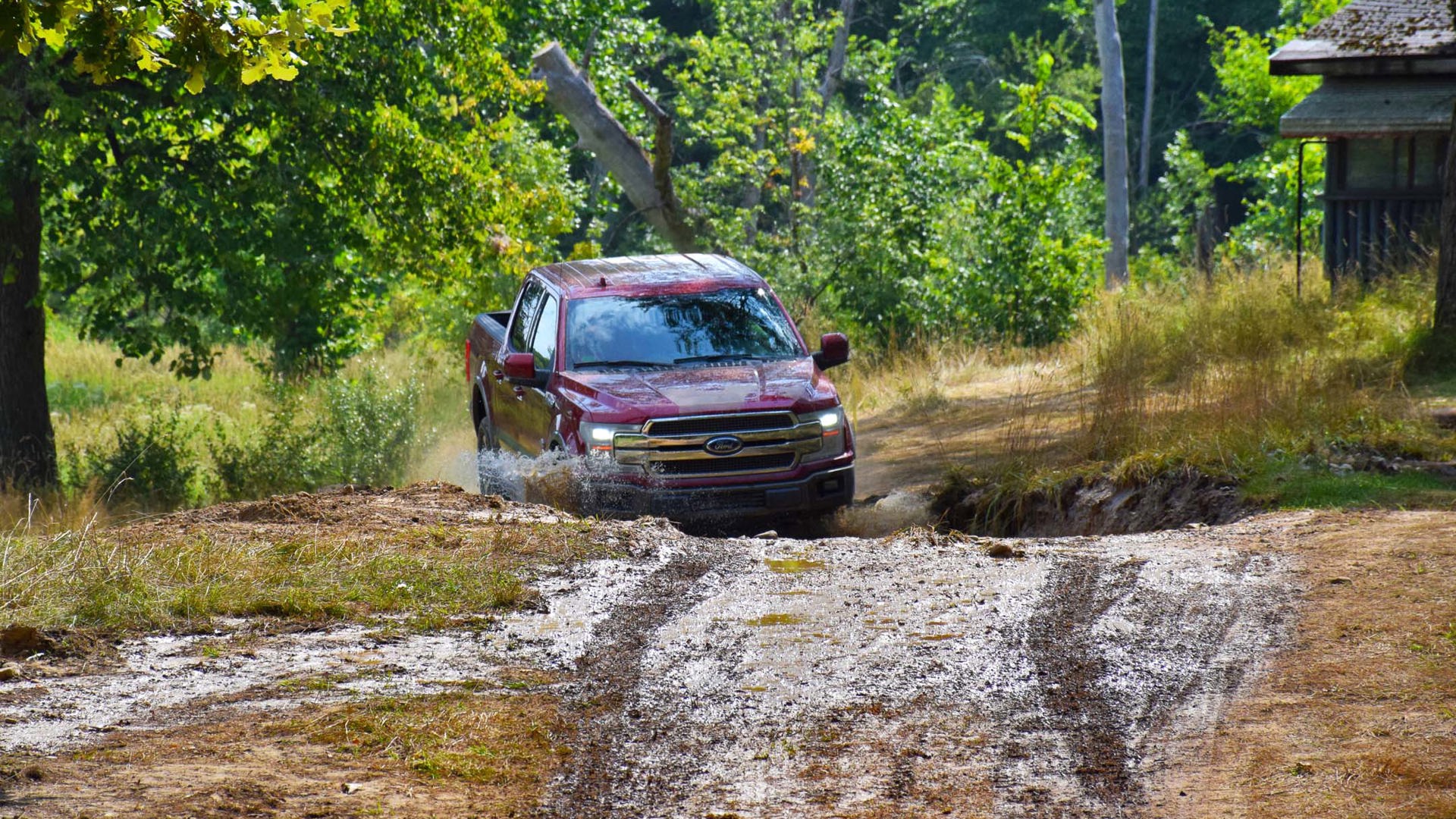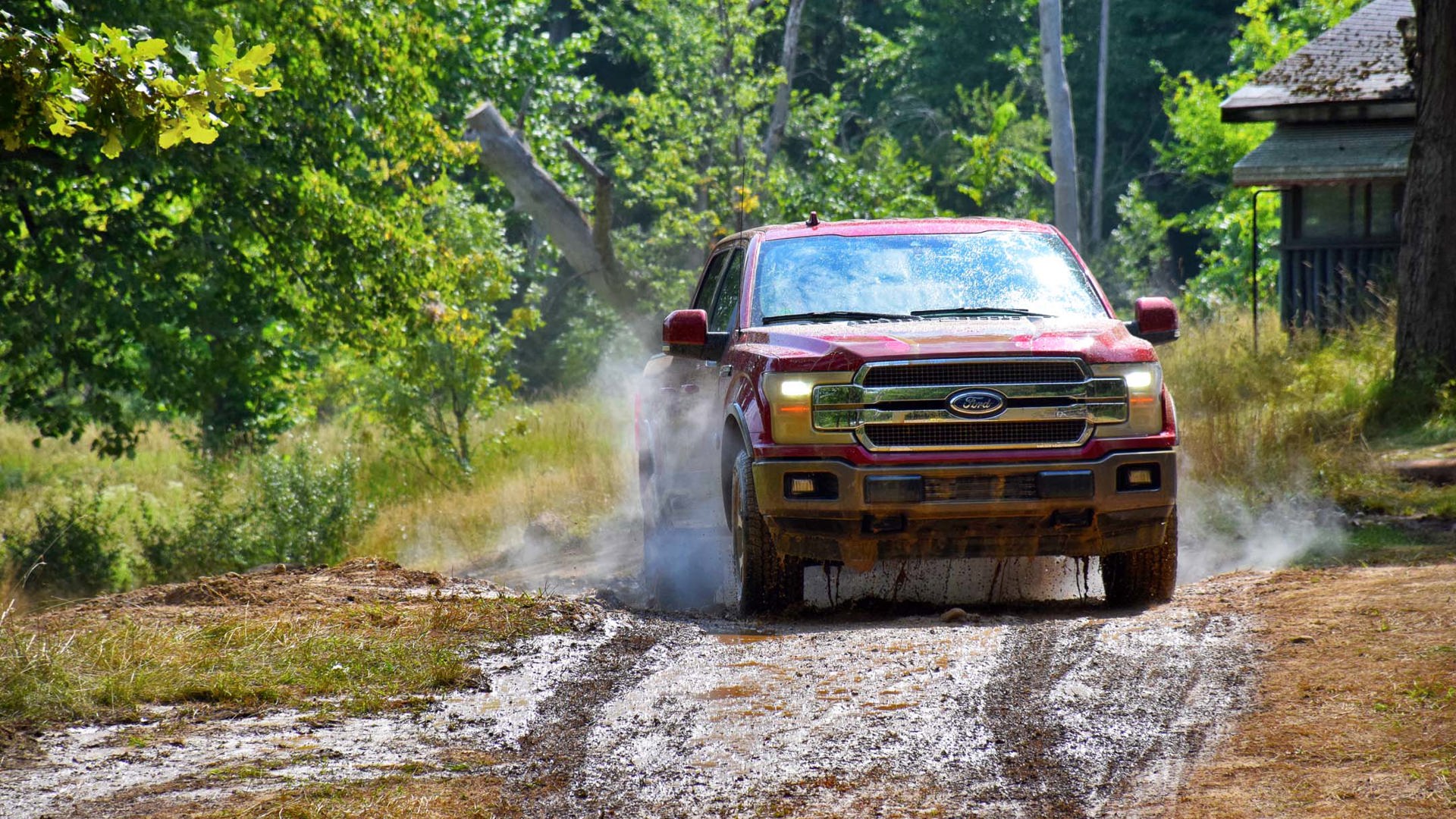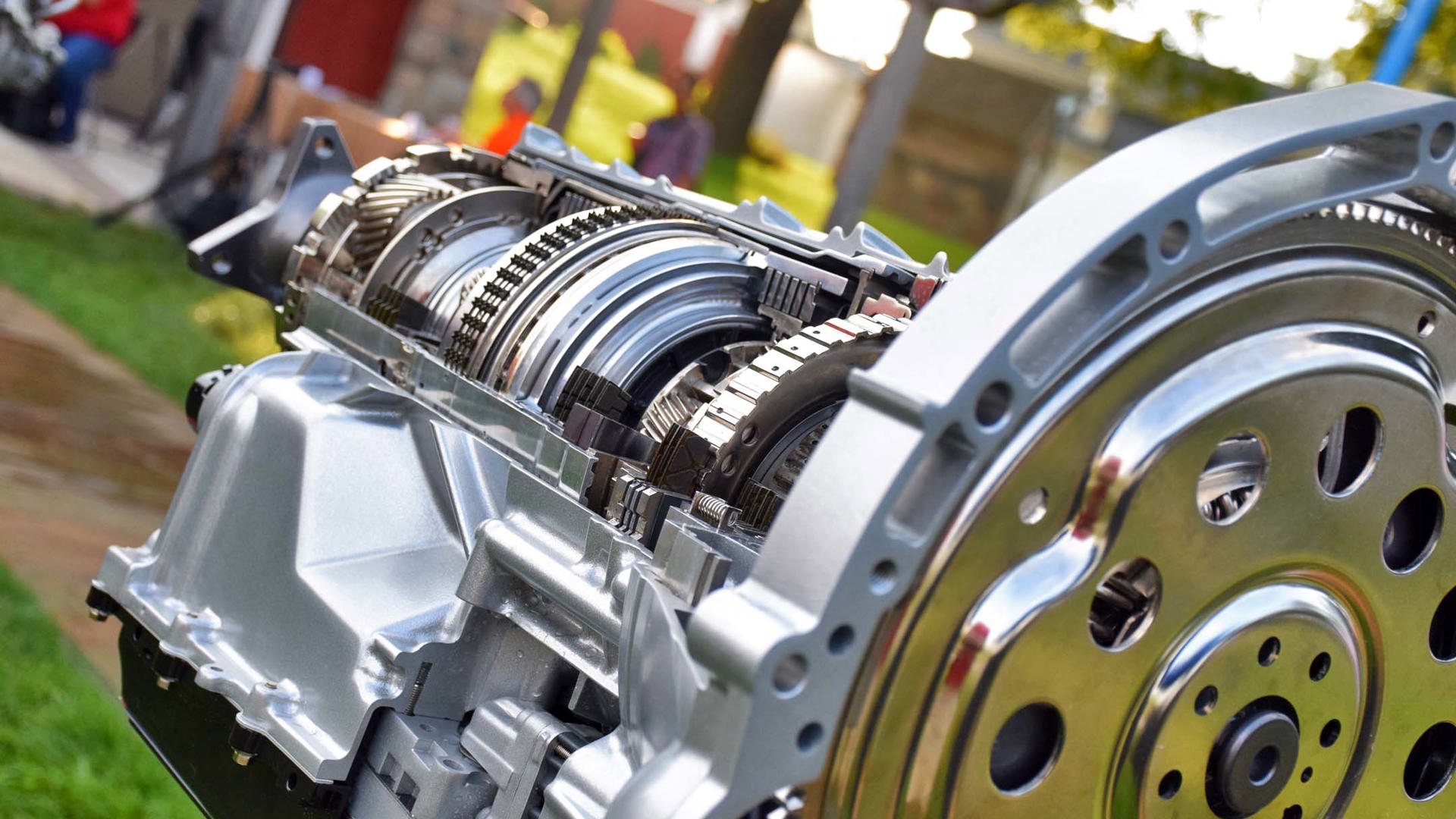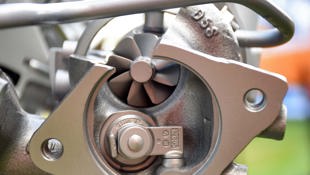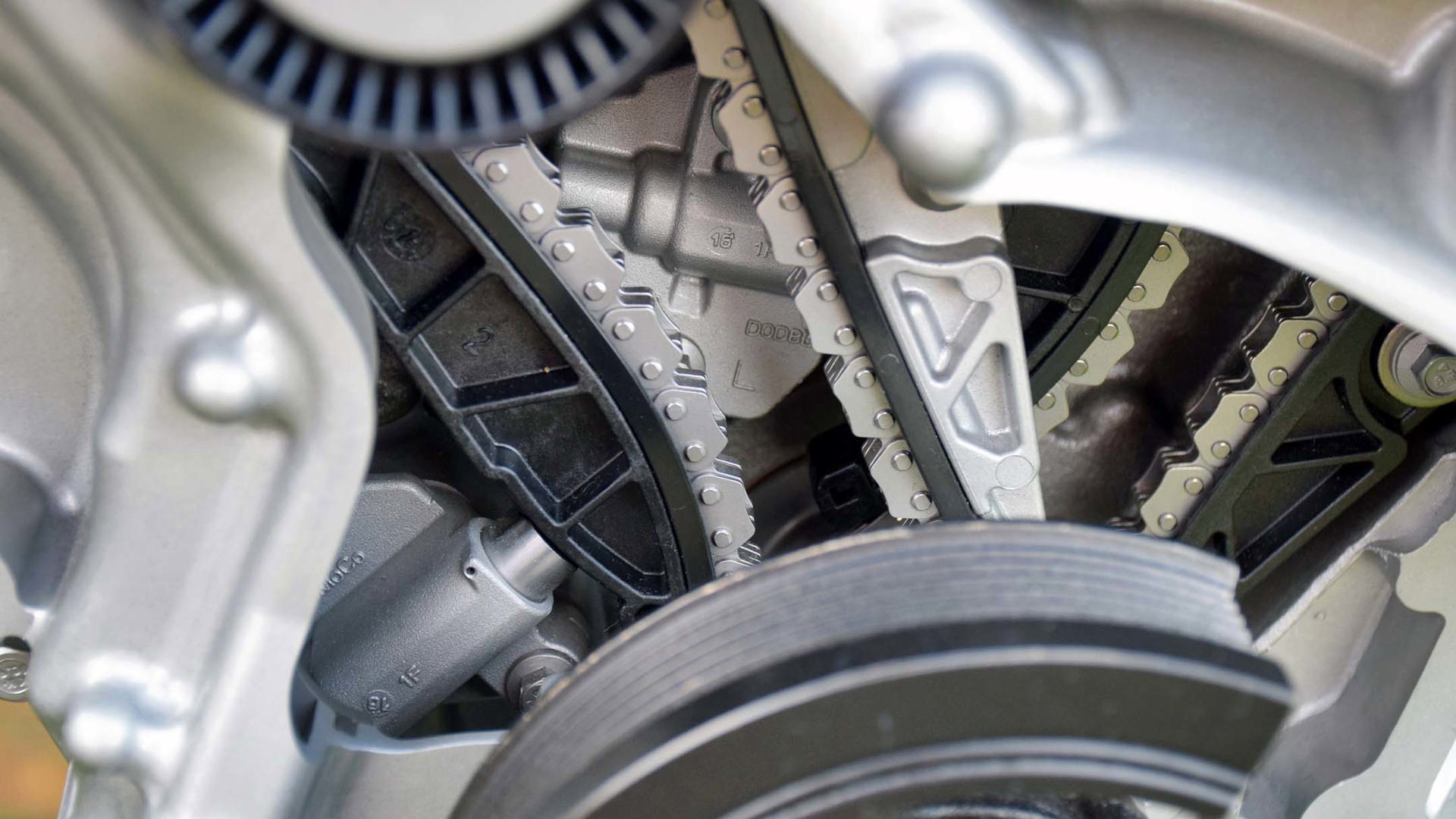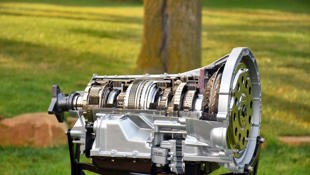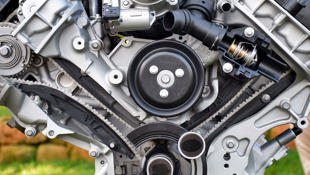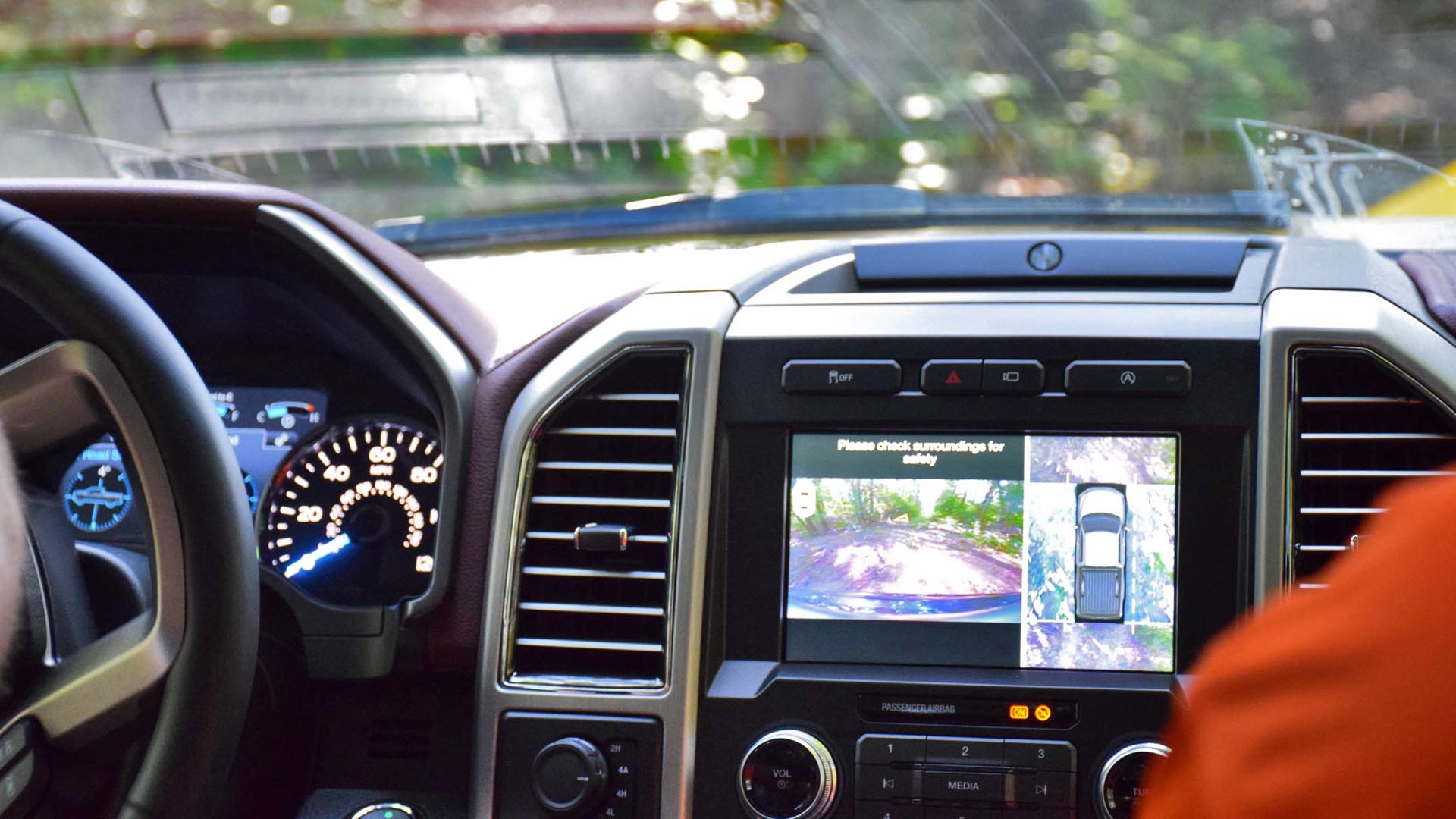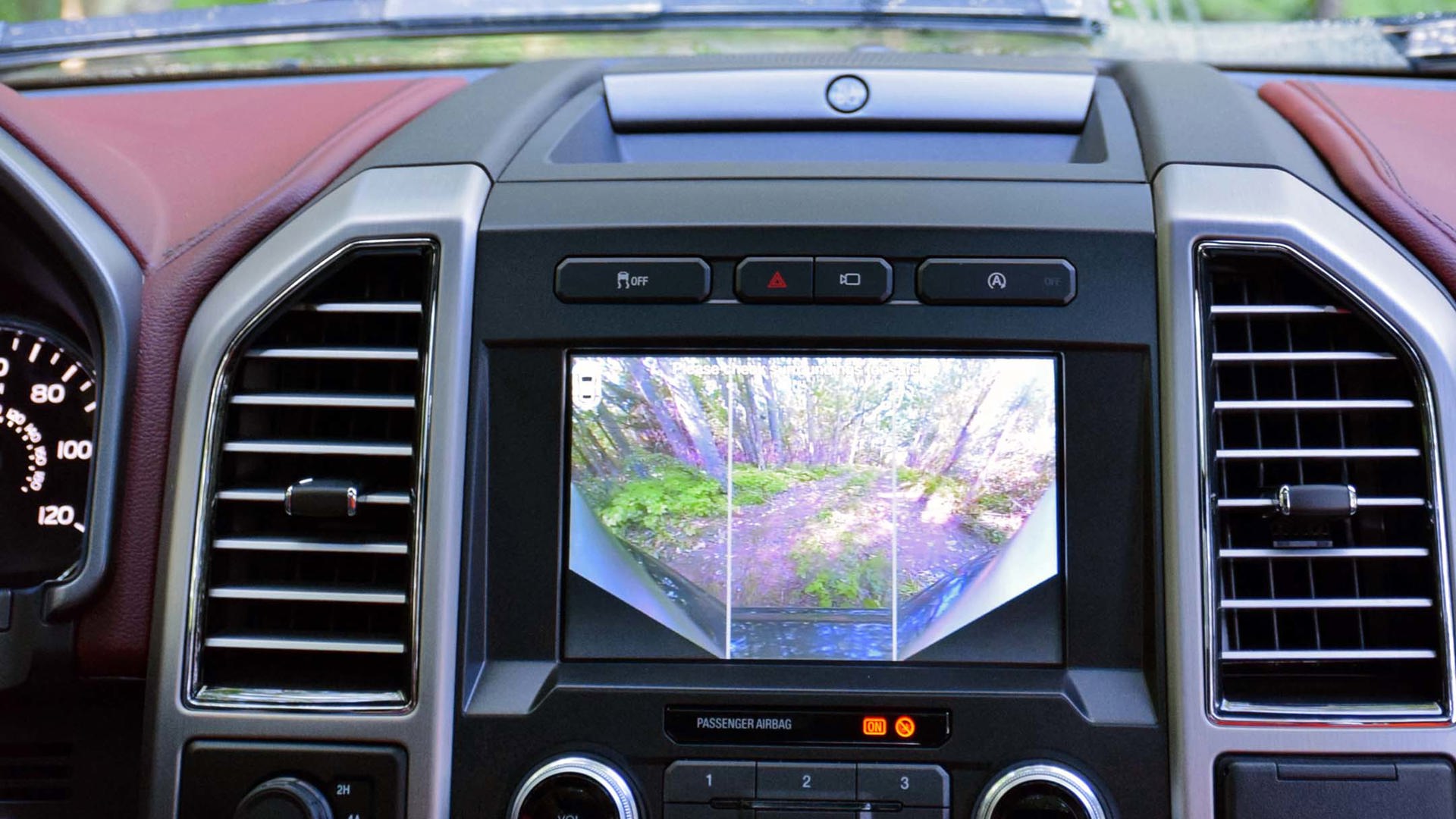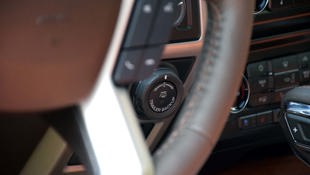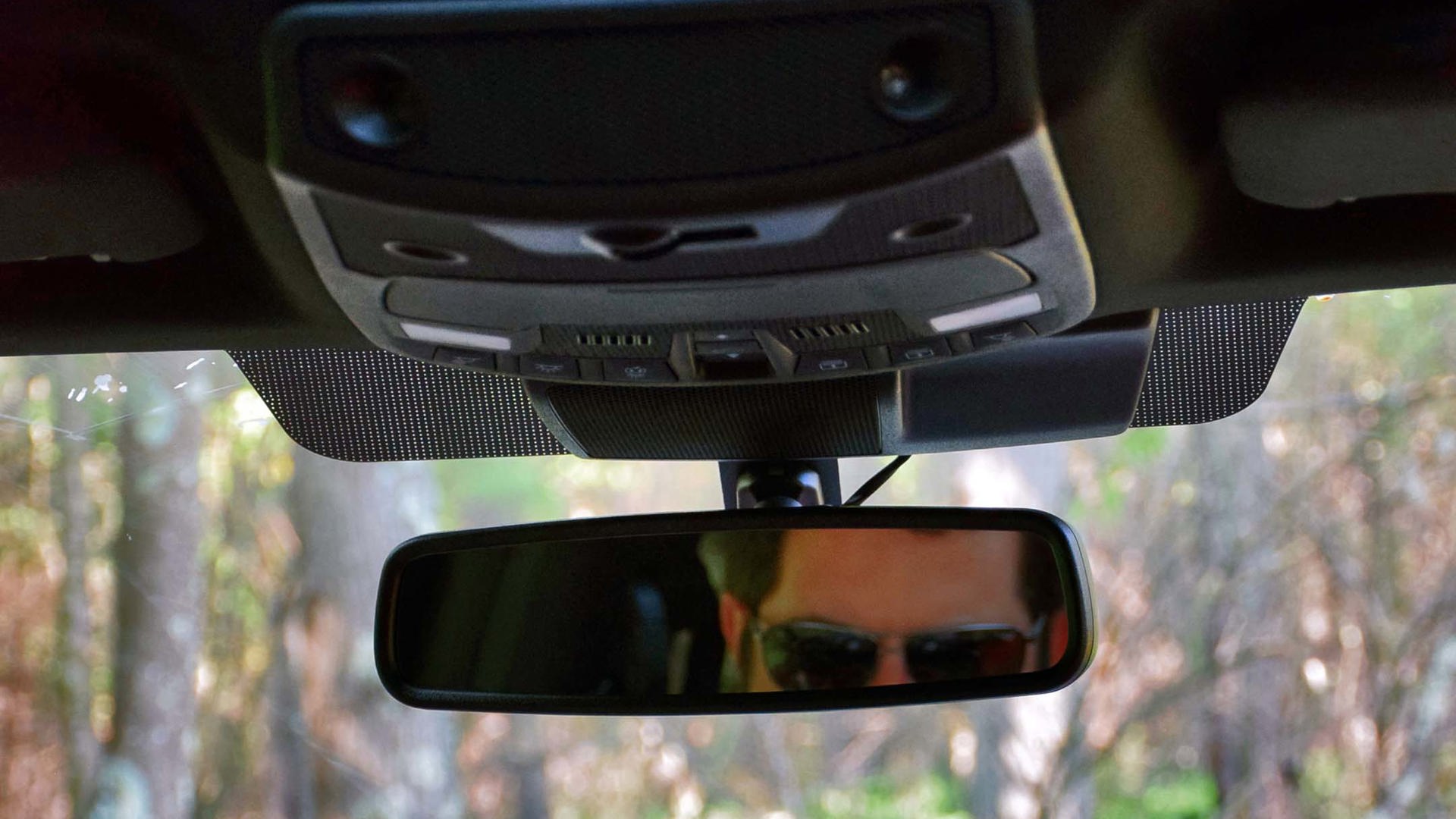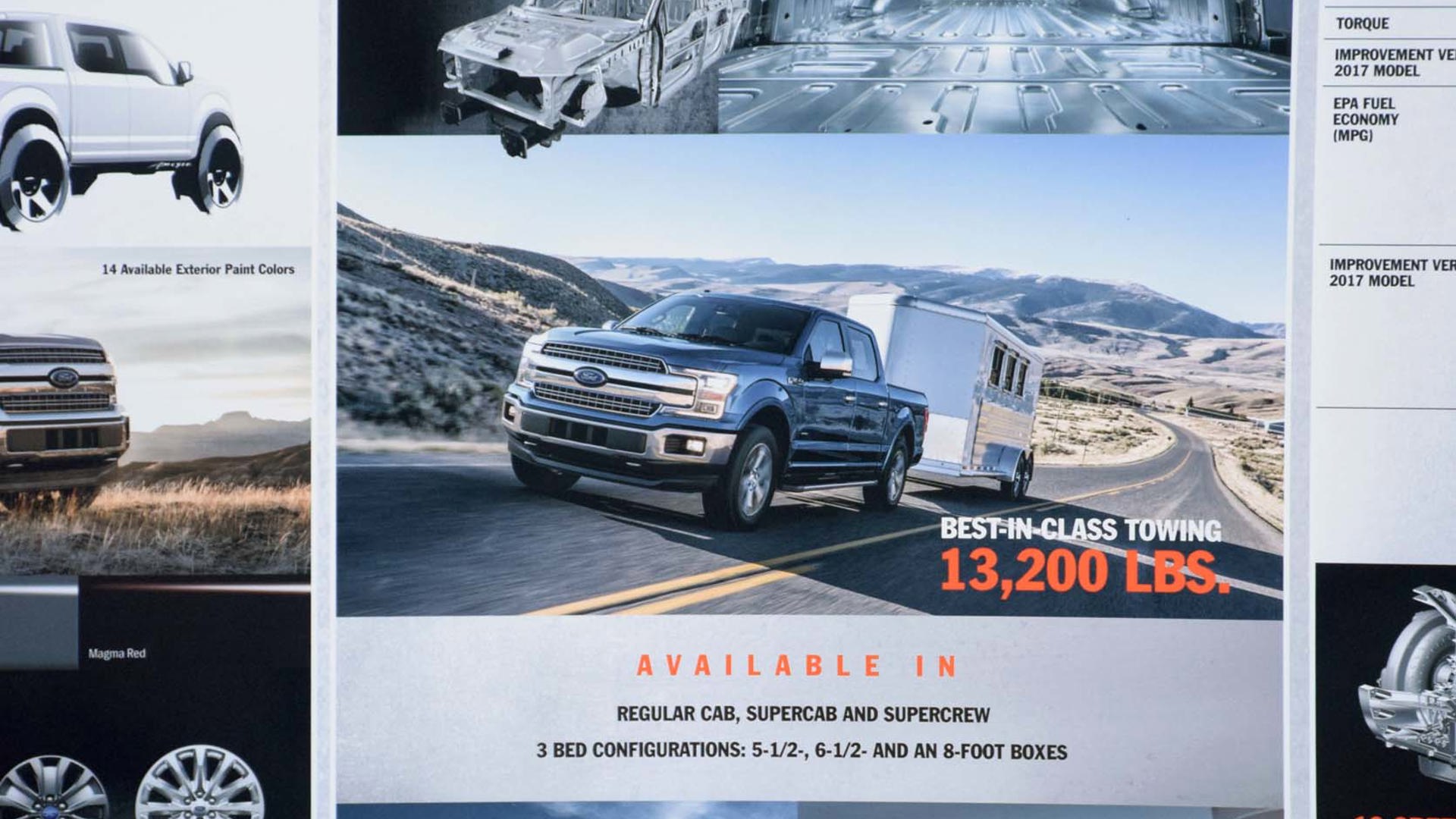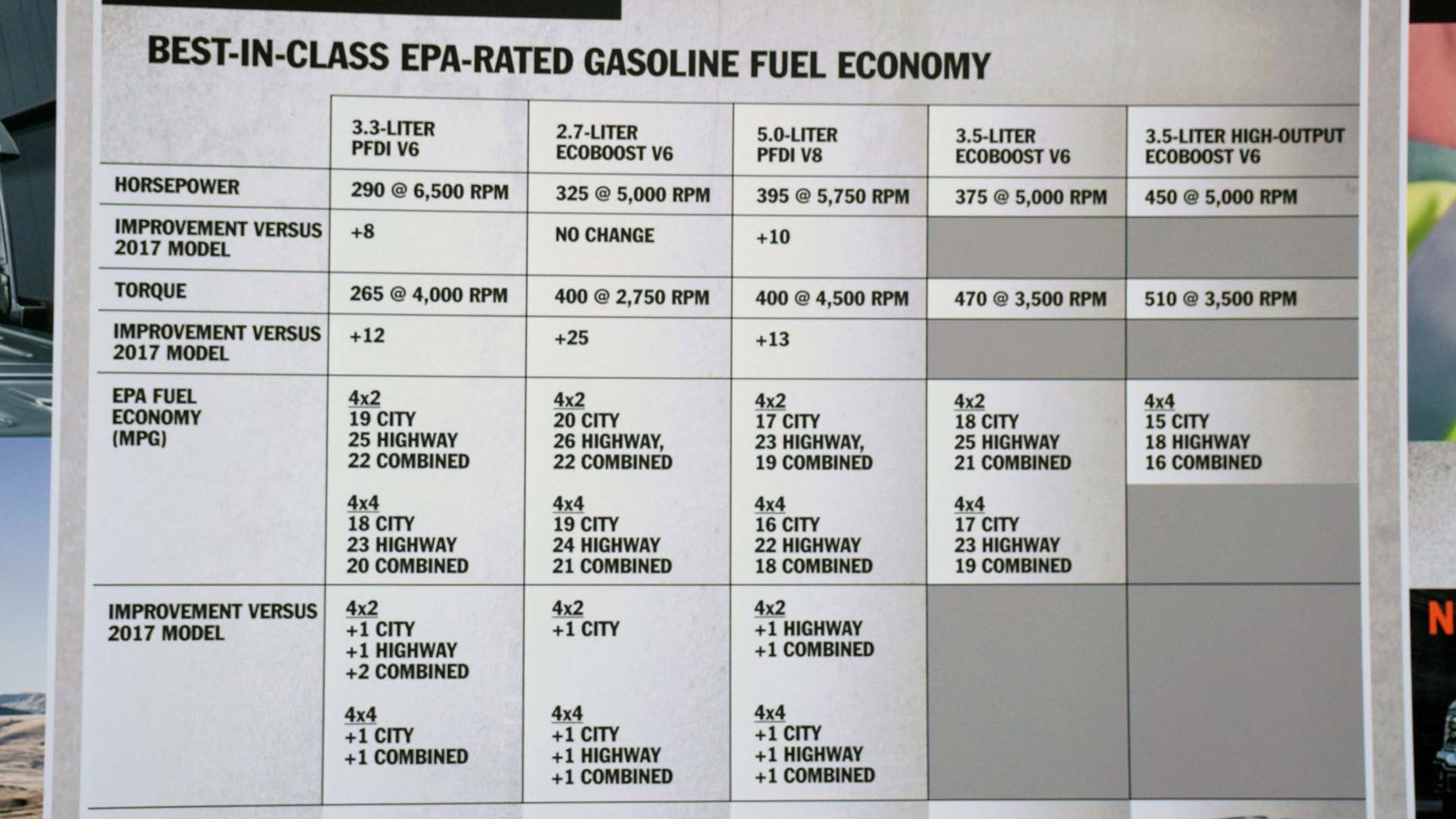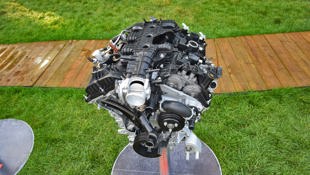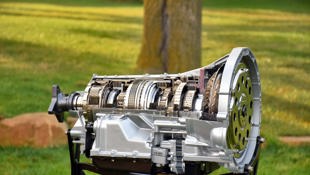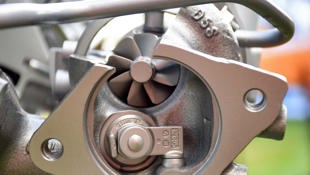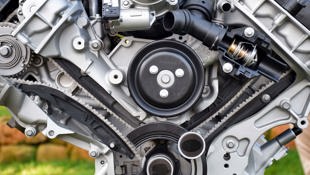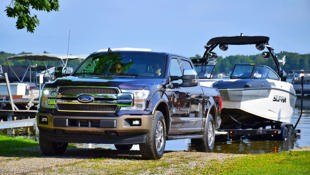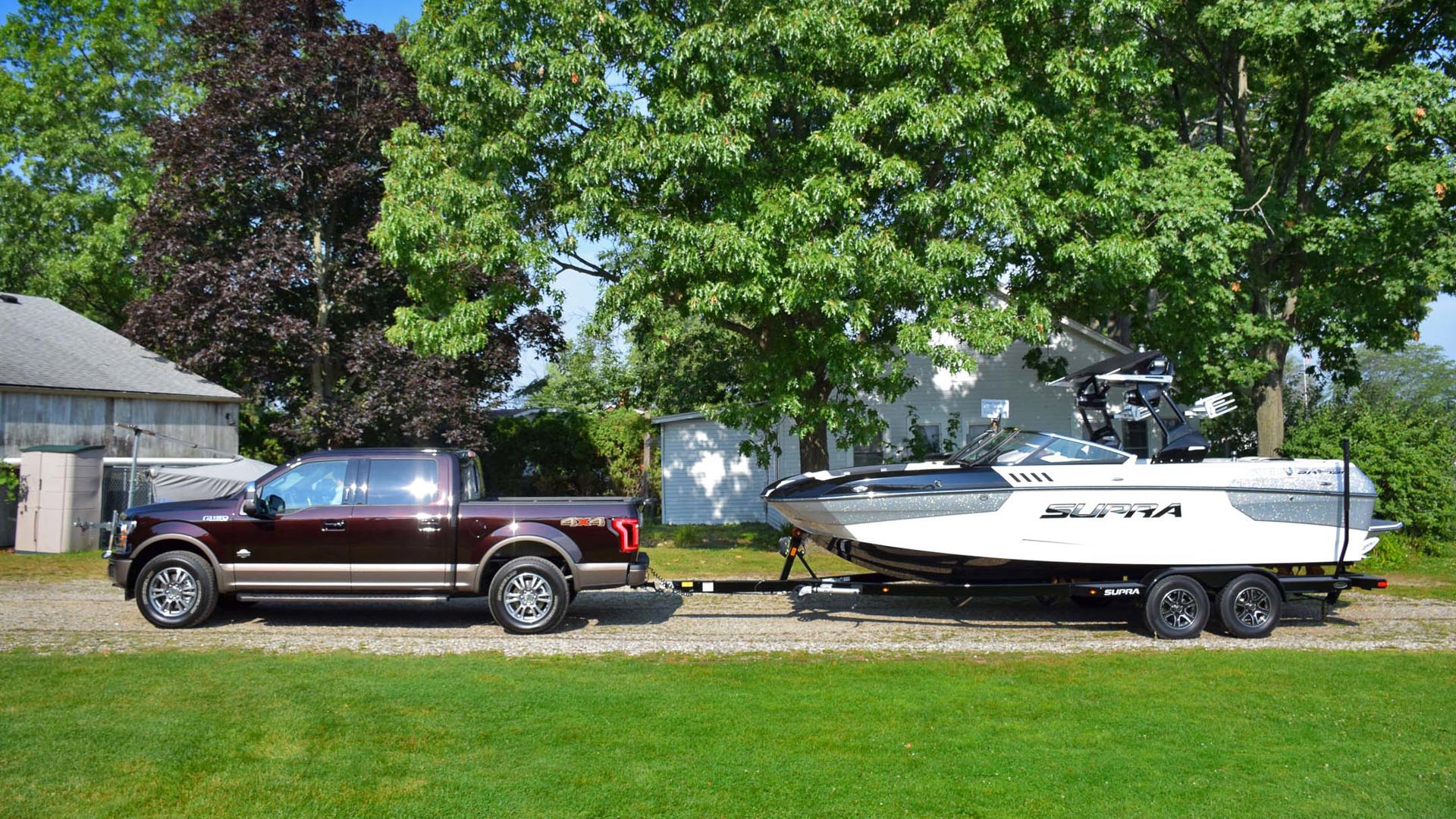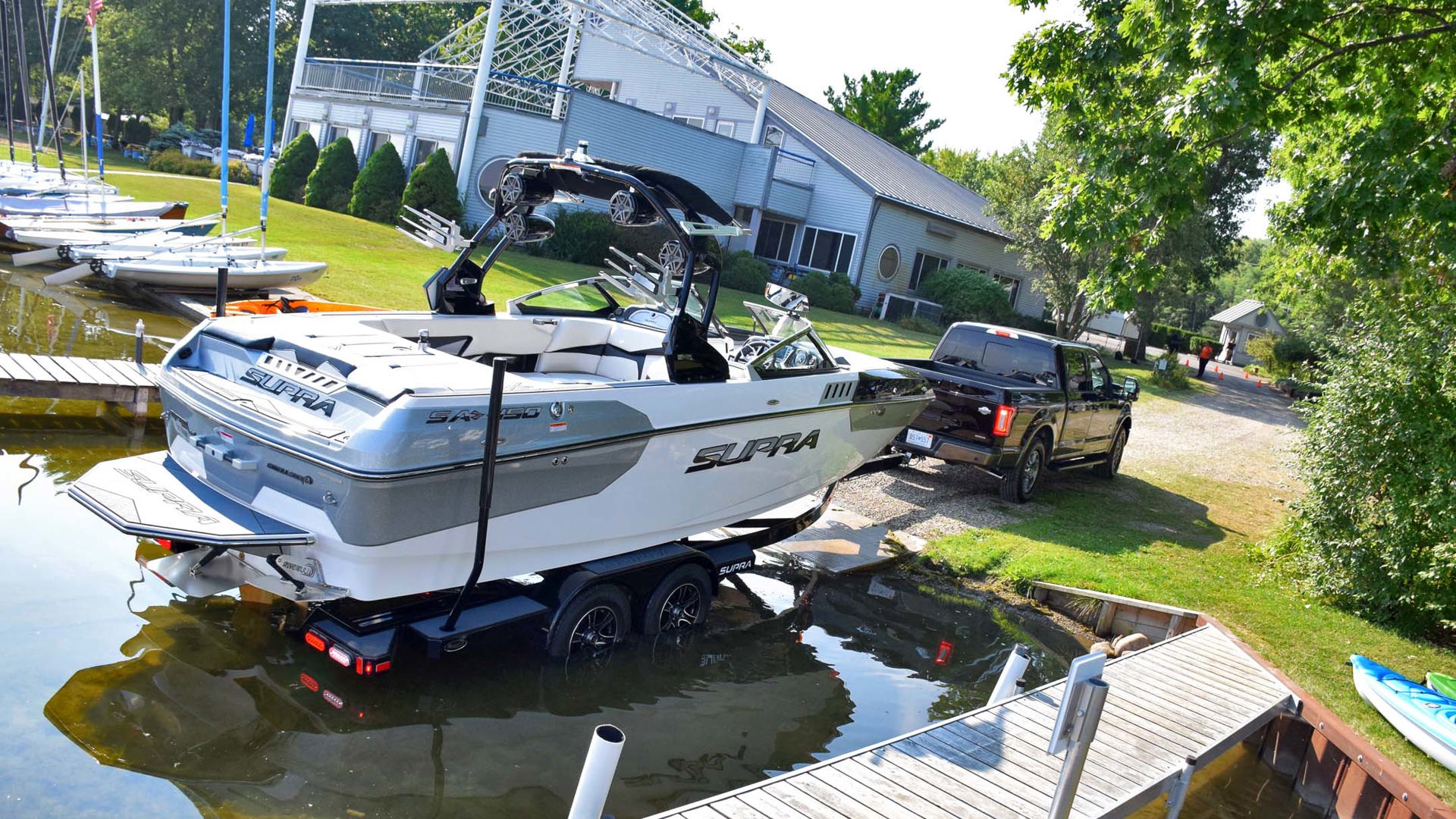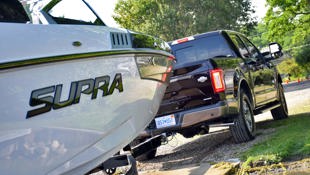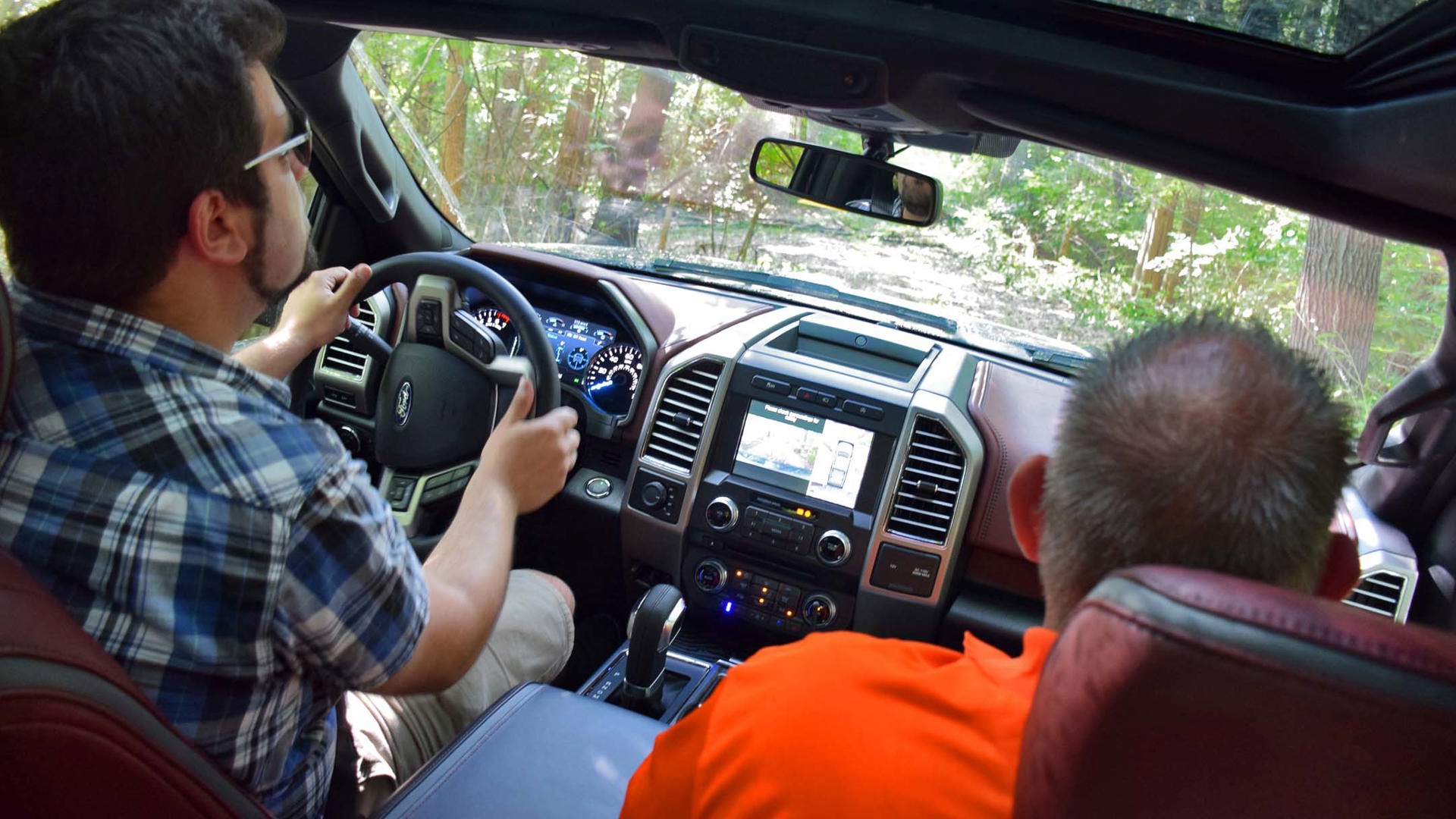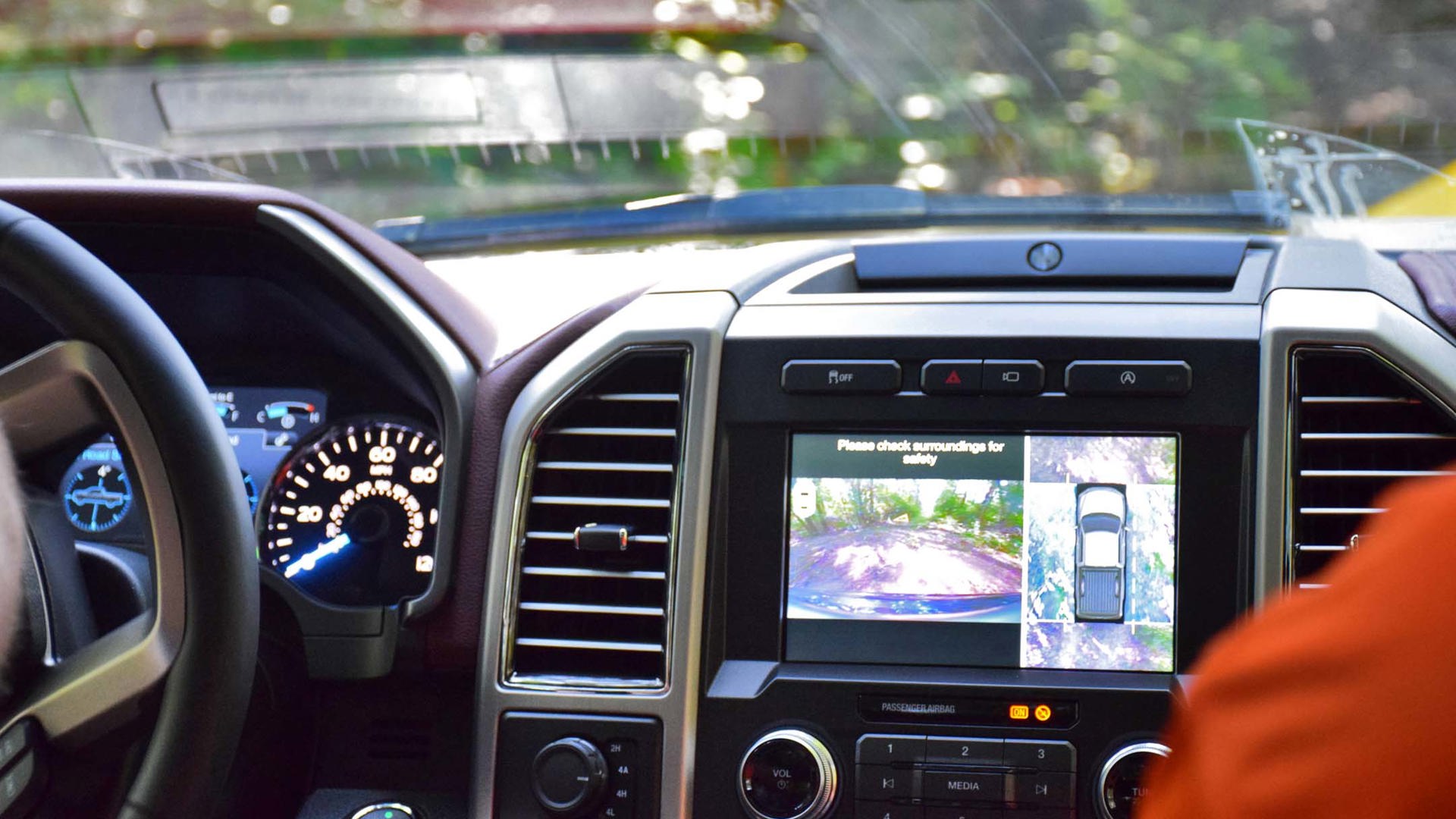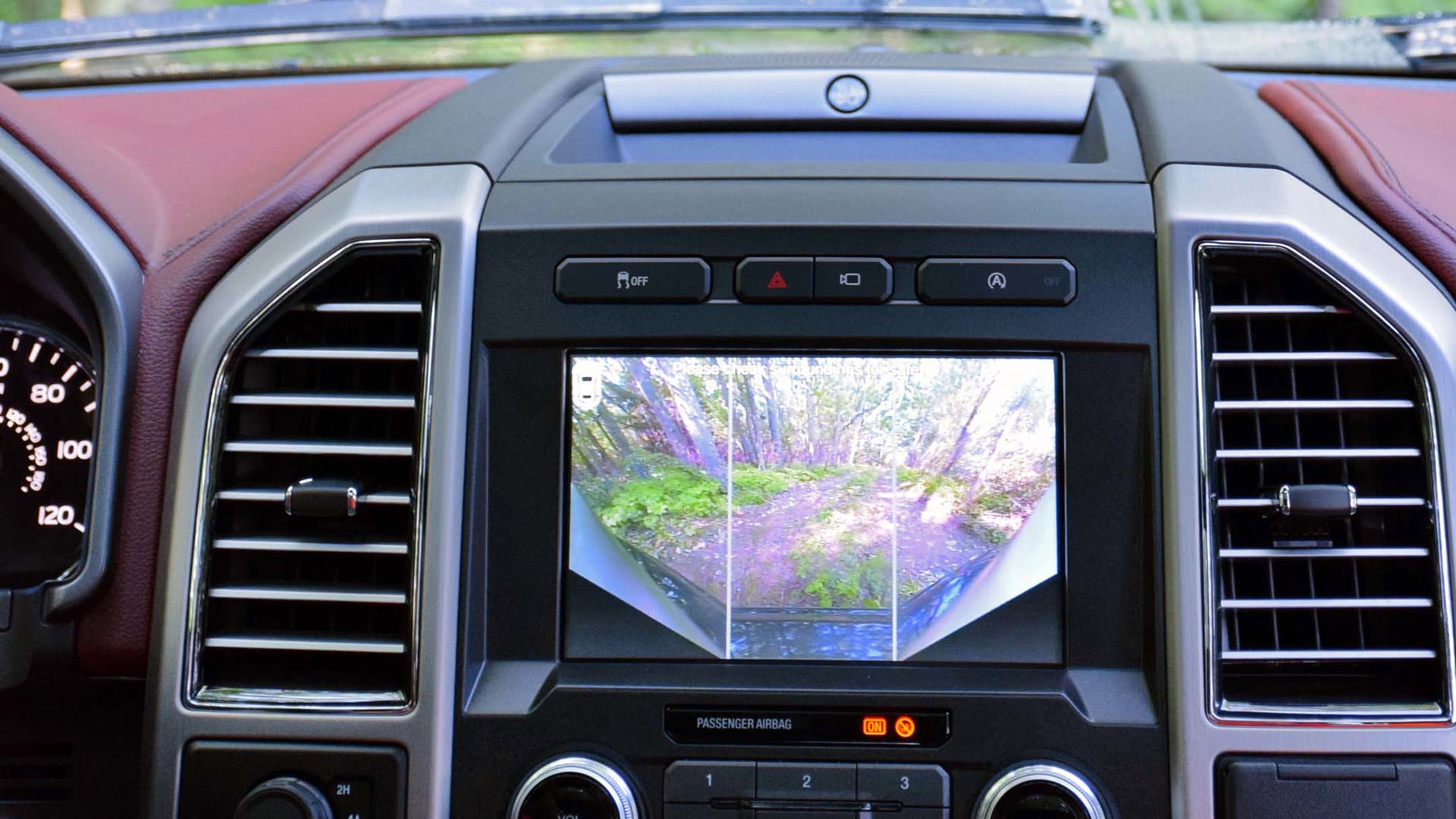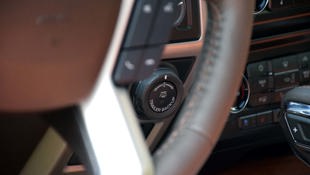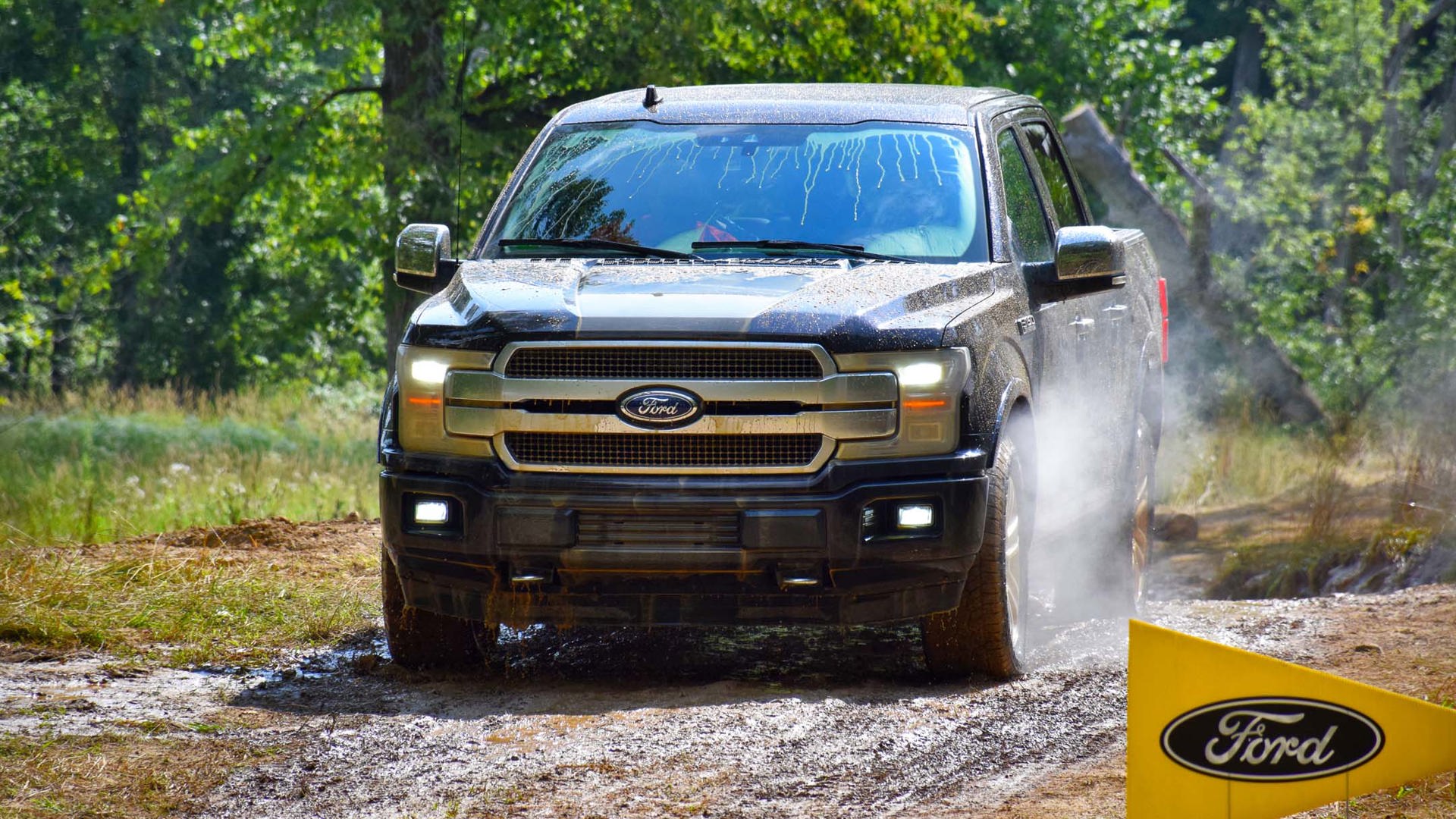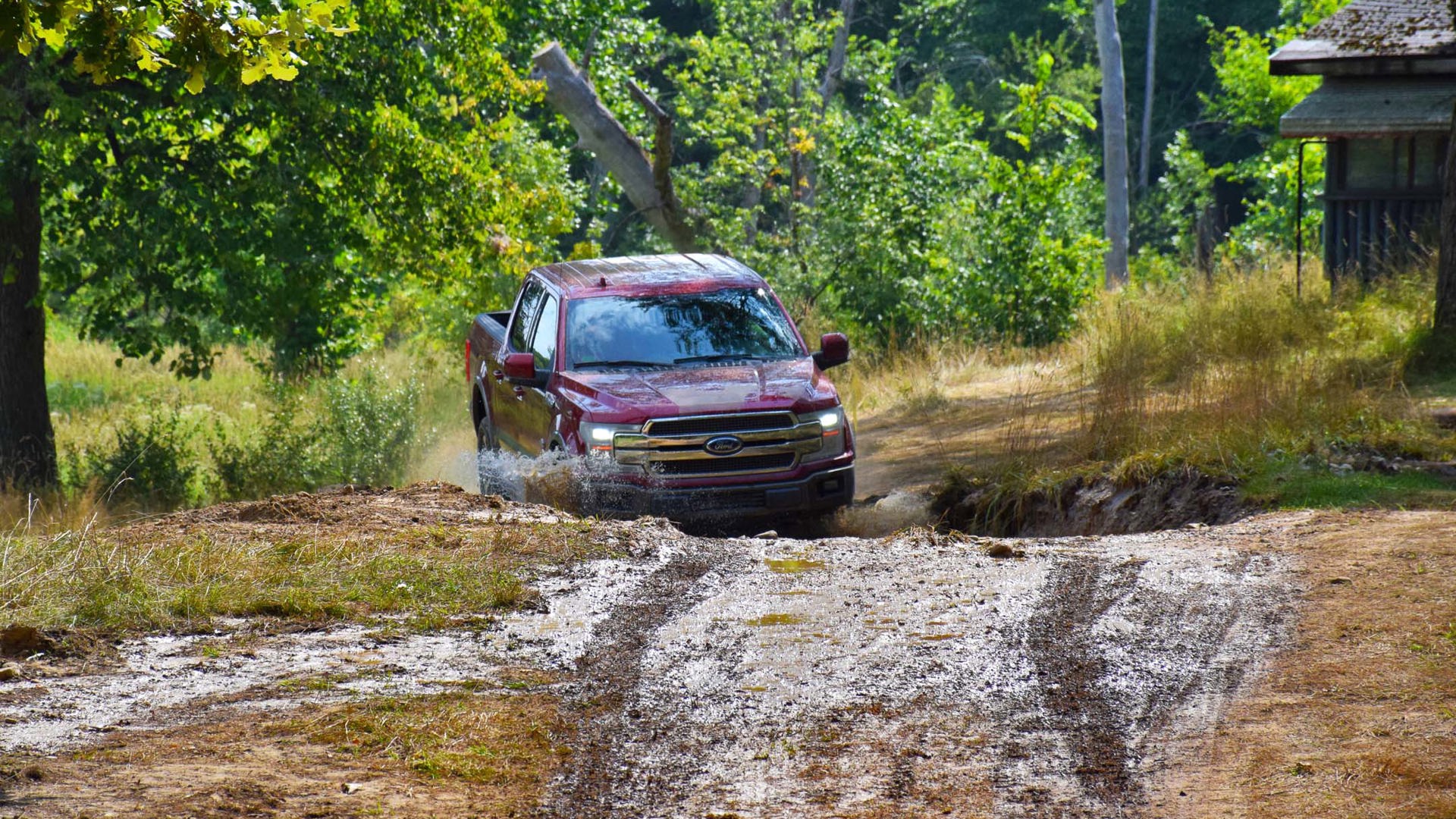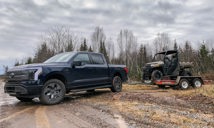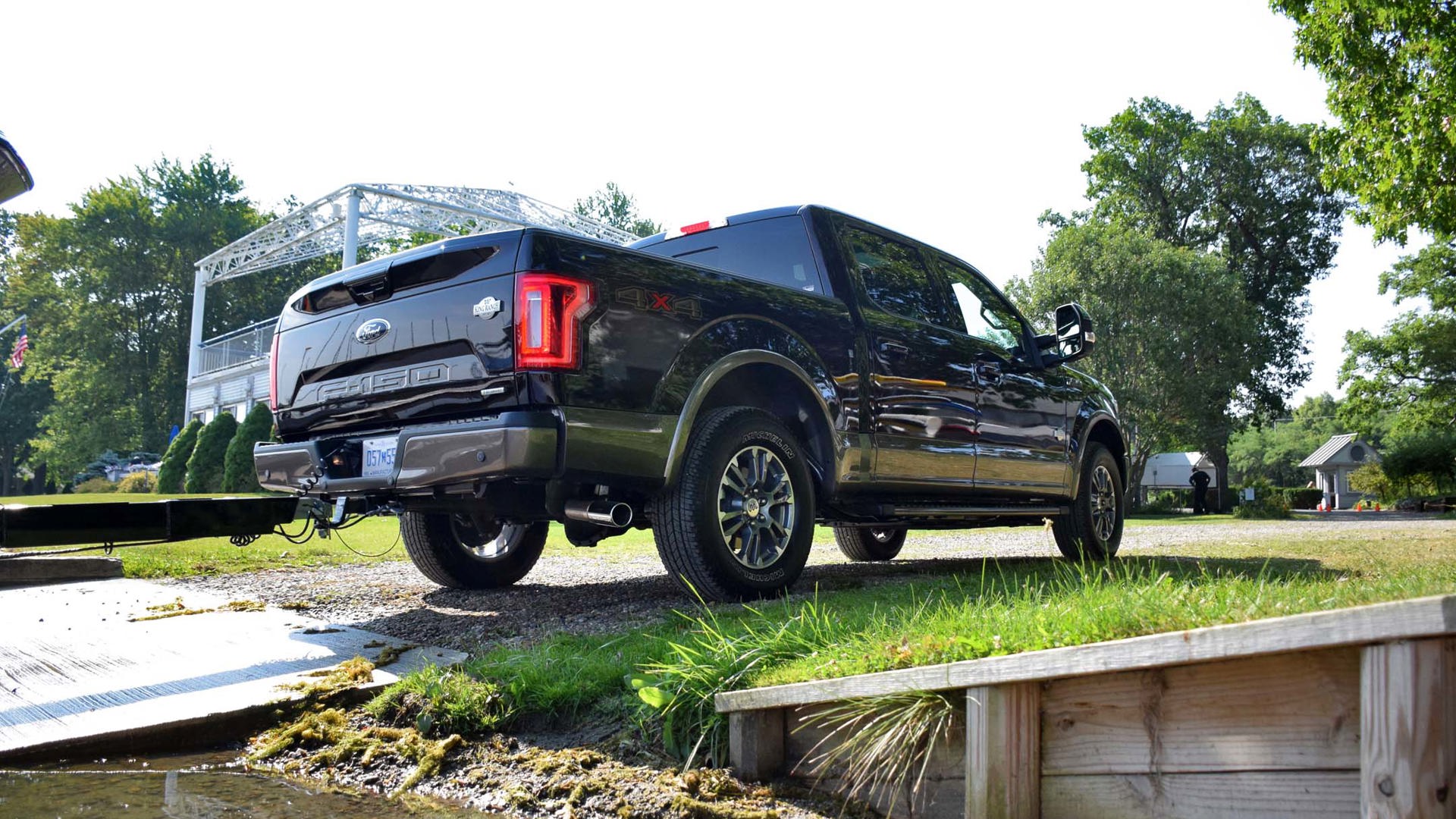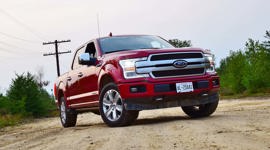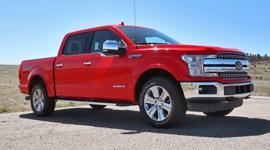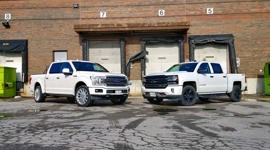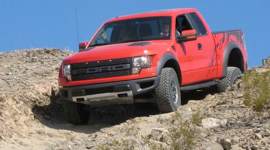Thanks to revisions and improvements for model-year 2018, drivers of the latest Ford F-150 can bask smugly in the top-dog status of their machines at the jobsite or boat launch – thanks to the achievement of the segment’s highest towing capacity, payload capacity, and the most torque available in any competitive gas- or diesel-burning pickup.
Tick the right boxes on the order sheet, and you’re clear to haul 13,200 lb. That’s more than a bit.
Go for a unit with the revised 3.5L EcoBoost V6 for output bragging rights. Silverado all up in your business at the lights? Annoying neighbour flapping his lips about his Ram? Pffft, whatever – you’ve got more grunt. And more towing capacity. And hell, even more gears – thanks to the widespread deployment of Ford’s new 10-speed automatic as standard across virtually all 2018 Ford F-150 models.
This rig’s recent to-do list has included becoming smarter, more capable, more efficient, and more handsome. The result? Tidied looks, more jam, more tech, and less drinking. That’s hardly an earth-shattering new concept for a mid-cycle update, but the tweaks and changes for this year have, once again, created an even more compelling new take on Canada’s best-selling truck.
And, let’s be clear: the Big Three are engaged in an ever-raging battle for the truck bucks of Canucks, and the customer is benefiting.
Should you be one of those customers, and one set on a 2018 F-150, numerous attributes are noteworthy.
First up, the revised engine line.
Base model units run a new 3.3L V6, sans turbocharger, good for 290 hp and 265 lb-ft of torque. That’s an improvement of 8 and 12, respectively, compared to last year’s 3.5L V6.
The 2.7L EcoBoost V6 enters second-generation territory with a mechanical overhaul. You get an unchanged 325 horsepower, but 25 lb-ft more torque, for a total of 400. That’s on par with many a twice-the-displacement V8 engine, most of which are still rolling out of bed at 2,750 rpm, where this little beauty V6 hits its hilariously low torque-output peak. A new variable-displacement oil pump nips away at fuel use, and a higher compression ratio helps amp power output.
The 5.0L V8 is non-turbocharged, and also makes 400 lb-ft of torque – though it doesn’t arrive in full until nearly 2,000 rpm later than in the little EcoBoost. Your horsepower figure with this engine is 395 – improvements of 13 and 10, respectively. To help drop more weight, this power unit now ditches heavier cylinder liners, and uses the same spray-bore lining technology you’ll find in the almighty snarl-blasting majesty, the Shelby GT350.
The second-generation 3.5L EcoBoost V6 carries on from last year, with 375 horsepower and 470 lb-ft of grunt, peaking at 3,500 rpm in this case.
Which engine to choose? My pick is the 2.7L EcoBoost. It’s a torque monster, and at anything much less than full throttle you can hardly tell it isn’t the meatier 3.5L unit. The real magic? I lugged around a 7,500 lb trailer that the little V6 barely seemed to notice, when I kept throttle inputs light and gentle. Here, this little fella doesn’t sound or feel taxed. Remember when I said about all that torque coming online from 2,750 revs? Yep, that’s how come.
Notables? All engines now run both port- and direct-injection, which contributes to improved economy and performance across the board. Idle-slashing auto stop-start technology is also standard across the lineup. And, all engines aside from the base level 3.3L V6 come standard with Ford’s 10-speed automatic. For the full scoop on how that works, and whether 10 gears is too many, you’ll want to read this 10-speed technical test.
What’s up, Ford engineers? Oh, you’ve been up-gauging frame segments and thickening axles? Sick deal, why’s that? Better towing? Sounds cool!
Little tweaks here, but effective ones. By strategically beefing up parts of the frame, and punching up the thickness of the front axle tubes, the F-150 can now claim the best towing capacity in the segment, if you go for the Max Tow package on offer in the Regular Cab, Supercab, and Supercrew models with three different bed configurations. Tick the right boxes on the order sheet, and you’re clear to haul 13,200 lb. That’s more than a bit.
Plus, whatever you’re towing won’t likely make you look like a doofus while you try to back it up, even if you’re a Category-Five bumbling idiot at trailer manoeuvring, like your writer. Go with the Pro Trailer Back-up Assist system, and you steer via a little knob on the dashboard. Forget the steering wheel – just turn the knob in the direction you want the trailer to go, while you watch it in the rear-view. To a total trailer rookie like me, it’s a godsend of an anti-noob knob: far more intuitive than overworking my thought-muscles to reverse steering inputs, mucking this all up, and winding up jack-knifed in the middle of the road, instead of backed tidily in the driveway.
The same gals and fellas who designed this little gem of a cheater system even used calculus and microchips to extend the reach of the blind-spot monitoring system, so that it now covers your trailer too. If your blind-spot light is off, it means there’s nobody beside your truck, and nobody beside your new boat, camper, or utility hauler, either.
Gimmicky gadgets? Too fancy? More stuff to break? Ford says features like these will only sell if they serve a purpose identified by a clear problem or concern of the customer. Don’t like gadgets? Don’t buy them – they’re optional. But, if you do like gadgets that make life a little easier and less stressful while you roll around doing truck things, you’re in the norm – and the new F-150 has you covered.
There’s even enhanced adaptive cruise control this year – which slows and speeds the F-150 to maintain a preset speed and following distance in traffic, and can stop completely and start the truck moving again, if said traffic comes to a brief standstill. Stop-and-go traffic is the freaking worst, after all. How dare all these people have places to go, at the same time you have places to go? Still, in this, and other less-stressful situations, you never have to touch the pedals.
On-board, changes are minimal. The scenery is familiar, though the colour schemes have been revised and modernized a measure. The King Ranch cabin is particularly sumptuous, with chocolatey leather and stitching for days. Higher-end models also get a new dash-mounted centre channel for the B&O Play stereo, a premium unit that’s kicked the former Sony system to the curb, because customers weren’t impressed with it. The replacement stereo system is bright, potent, and crisp: a worthy long-haul listening companion that, after a little fine tuning, plays every part of every track with vivid high resolution, and no part of your music, from Kenny Loggins to Foster the People, drowning out or overwhelming any other.
The look is gussied up, too. The signature side profile with drop-off beltline remains, and the “F-150” logo is stamped into the machine’s big aluminum rump, à la Toyota Tundra, for added visual kick. In front, a new grille bar is visually clamped in place by the LED-accented headlights. There are six grilles available, with several variations of each. Do you like selection? Because Ford’s sure you do.
Case in point?
There are no fewer than 18 mainstream F-150 models on the table for shoppers to choose from, and of course, a plethora of option packages, accessories, and stand-alone features for fine tuning.
Choose away.
Pricing: 2018 Ford F-150
Regular Cab, 122-inch Wheelbase
4x2 XL: $30,499
4x2 XLT: $34,799
4x4 XL: $34,999
4x4 XLT: $39,299
Super Cab, 145-inch Wheelbase
4x2 XL: $36,599
4x2 XLT: $39,099
4x2 Lariat: $50,499
4x4 XL: $41,099
4x4 XLT: $43,099
4x4 Lariat: $54,899
Super Crew, 145-inch Wheelbase
4x2 XLT: $40,599
4x2 Lariat: $51,999
4x4 XL: $45,299
4x4 XLT: $44,749
4x4 Lariat: $57,199
4x4 King Ranch: $68,129
4x4 Platinum: $70,579
4x4 Limited: $77,779
